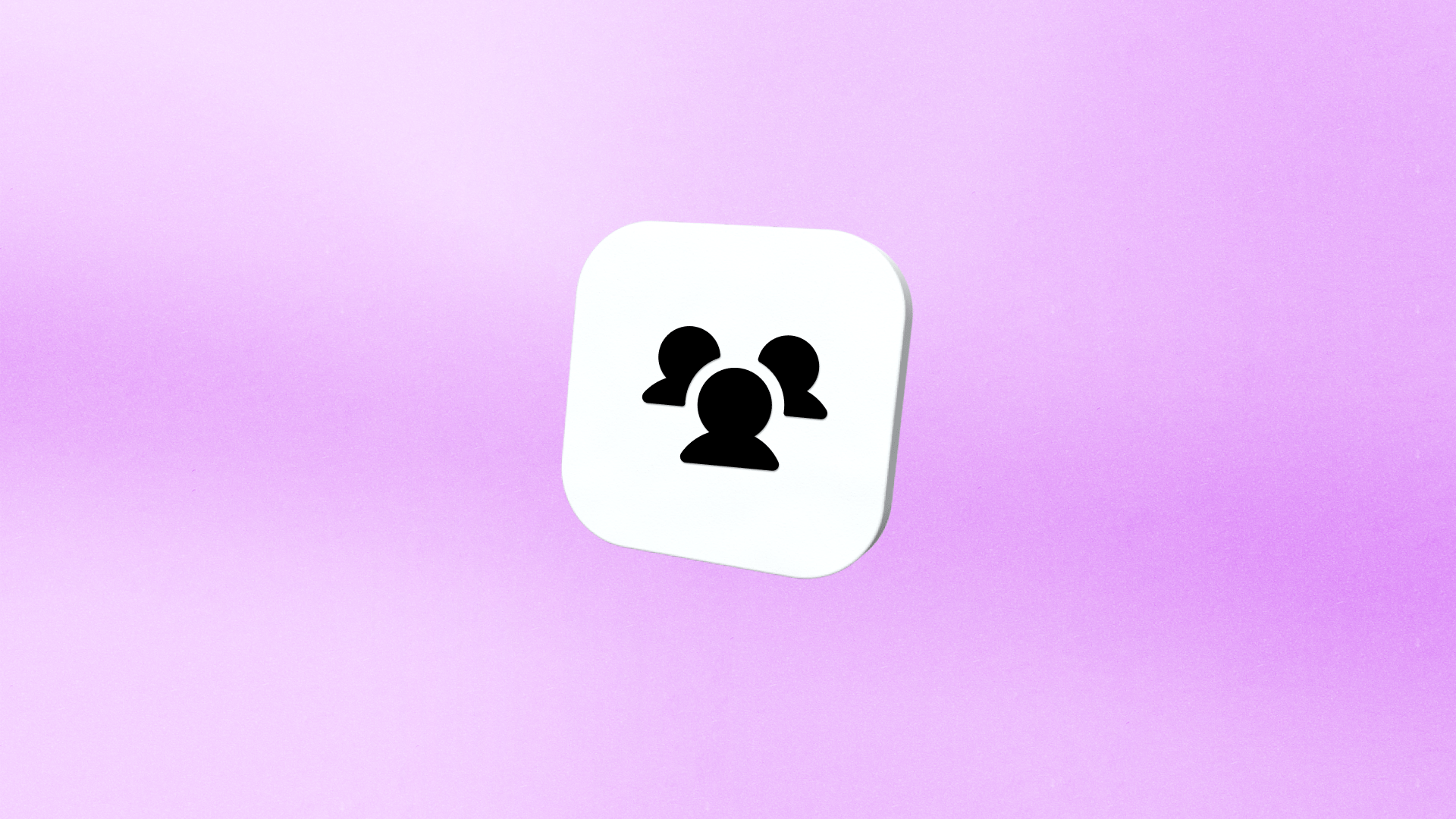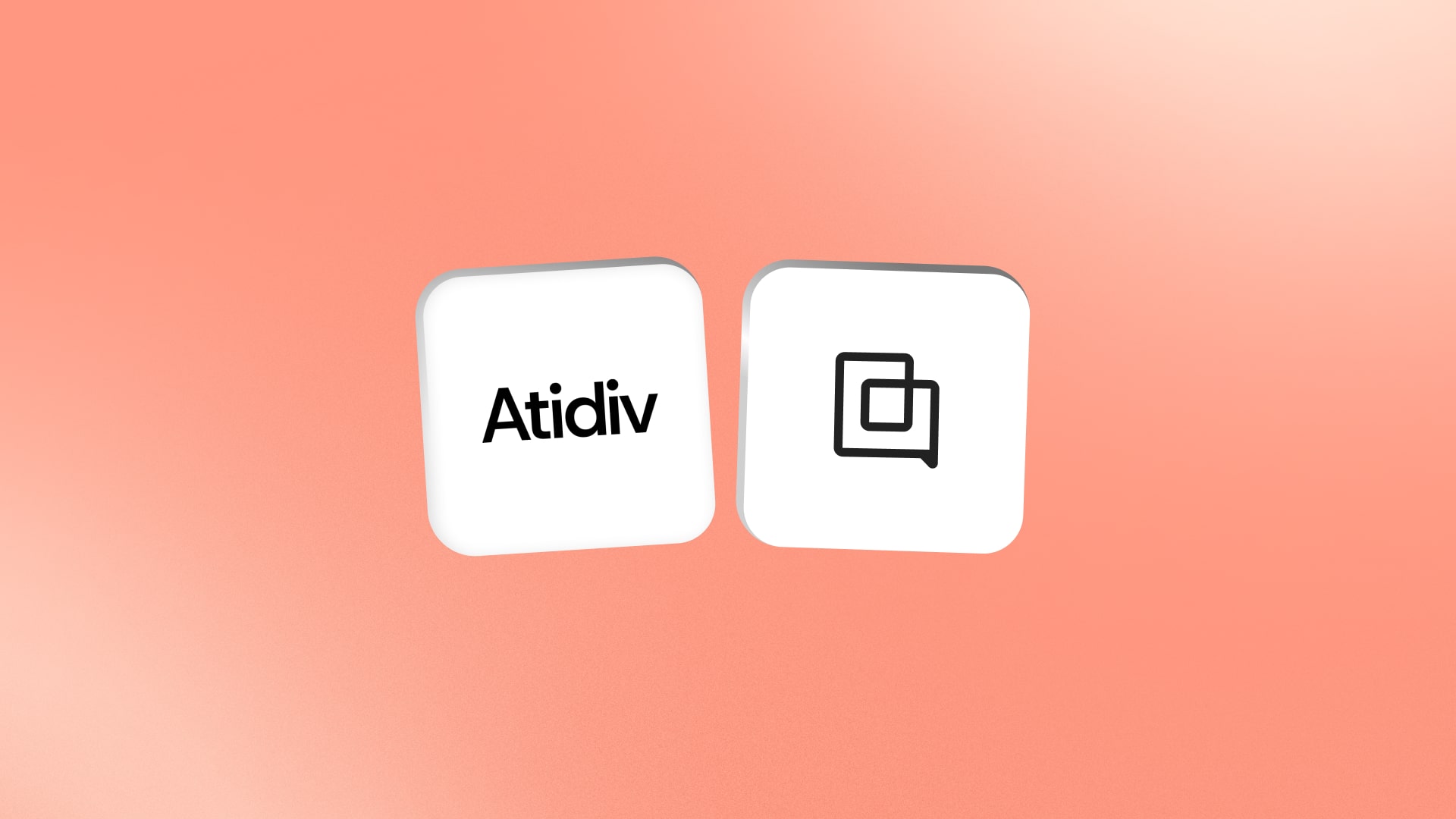

You Don’t Need More Tools: You Need Teams Who Use Them Right
TL;DR:
- Most brands underuse their support tools: Gorgias has powerful features, but many teams don't take full advantage of them.
- Atidiv’s CX experts unlock Gorgias’s full potential: From tagging and macros to dashboards and rules, Atidiv ensures every feature drives value.
- Smart tagging creates strategic insights: Agents tag every interaction to surface product feedback, customer sentiment, and emerging trends in real time.
- Macros and Rules streamline support: Atidiv builds brand-consistent Macros and uses Rules to reduce manual work and clutter.
You don’t need more software—just better usage: Atidiv transforms existing tools like Gorgias into engines for efficiency, growth, and retention.
If you’re like most ecommerce brands, you’ve invested in great tools like Gorgias to streamline support, automate workflows, and deliver personalized experiences at scale. But here’s the hard truth: Having the tools doesn’t mean you’re using them well.
We see it all the time. Gorgias is live, Macros are written, a few Rules are set, and then… chaos. Tags go unused, dashboards lack insight, and your agents are still drowning in tickets.
That’s why leading brands aren’t just buying tech, they’re partnering with teams who know how to use it. That’s where Atidiv comes in.
{{lead-magnet-1}}
The tools are there. Most teams just don’t maximize them.
Gorgias is a powerful platform. Out of the box, it gives you:
- Custom tagging and views
- Automation rules to speed up repetitive tasks
- Macros that standardize your brand voice
- Real-time dashboards and revenue attribution
But without the right people using these tools effectively, it’s just noise. Atidiv’s CX specialists are trained Gorgias power users, and they make sure every feature works hard for your brand.
What happens when CX teams know the tool inside out
Here’s how Atidiv leverages Gorgias to drive real results:
Smart tagging for strategic insights
Atidiv agents don’t just respond to tickets, they tag every interaction with purpose.
- Common product issues? Tagged.
- Pre-sale objections? Tagged.
- VIP customers? You bet—tagged.
This turns your inbox into a live dashboard of customer sentiment, product feedback, and emerging trends, no extra software required.
Macros that actually get used
Atidiv writes and maintains Macros that go beyond “Thanks for reaching out.”
- Dynamic responses tailored to each issue
- Integrated links to help center articles or policies
- Embedded personalization that keeps your brand voice consistent
These aren’t just canned replies—they’re crafted CX responses built to scale.
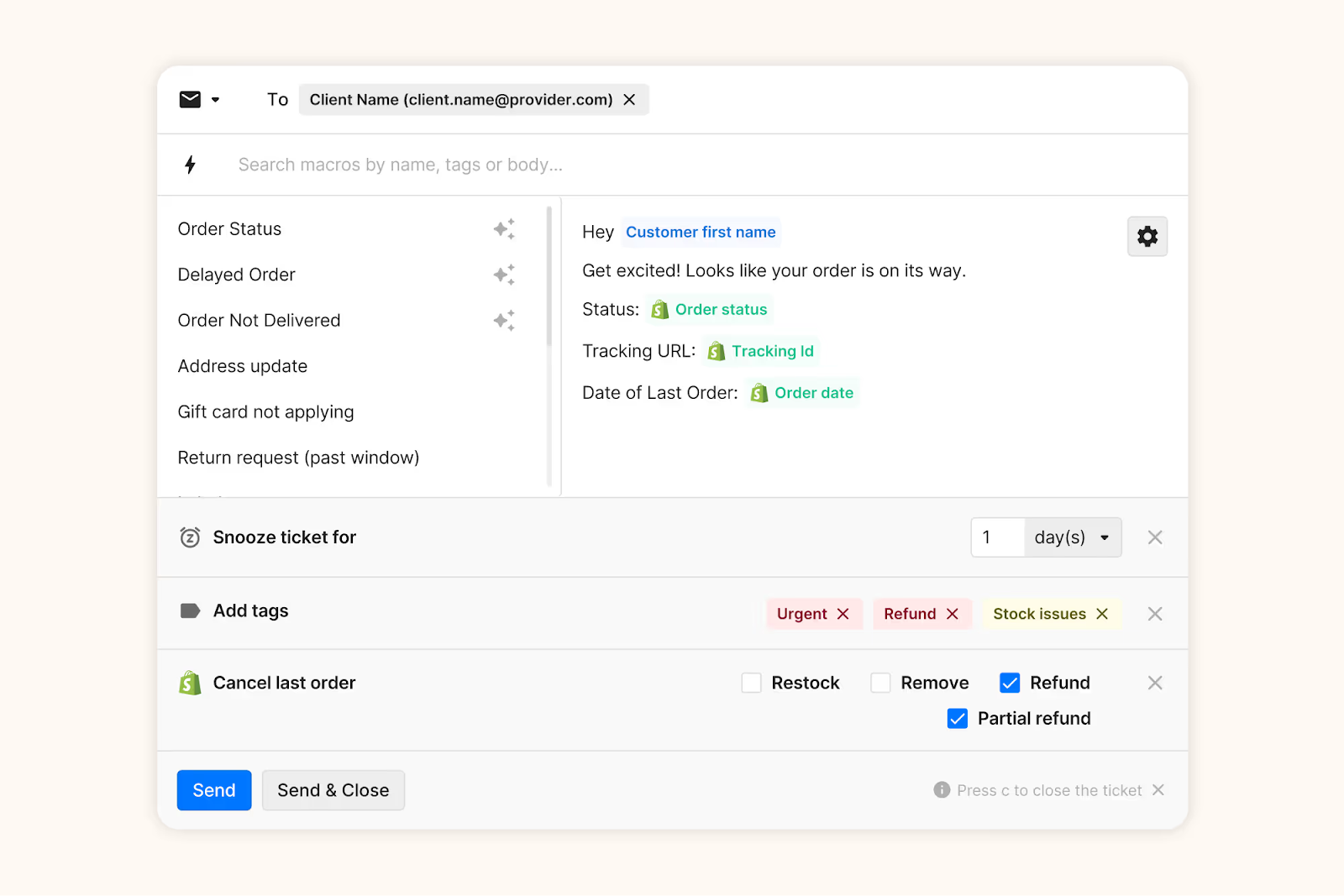
Enhance your Macros with tags, snooze rules, Shopify actions, and other dynamic variables.
Dashboards that drive decisions
Every Atidiv client gets a customized Gorgias dashboard. It’s built by Atidiv’s Team Leads to track what matters:
- CSAT trends
- SLA performance
- Volume by tag or channel
- Revenue generated from support
No more wondering if your support is working, now you know.
Rules that eliminate repetition
We use Gorgias Rules to route tickets, send auto-replies, and tag intents, reducing ticket clutter by up to 30%.
The result? Agents spend more time on high-impact conversations and less time chasing tracking numbers.
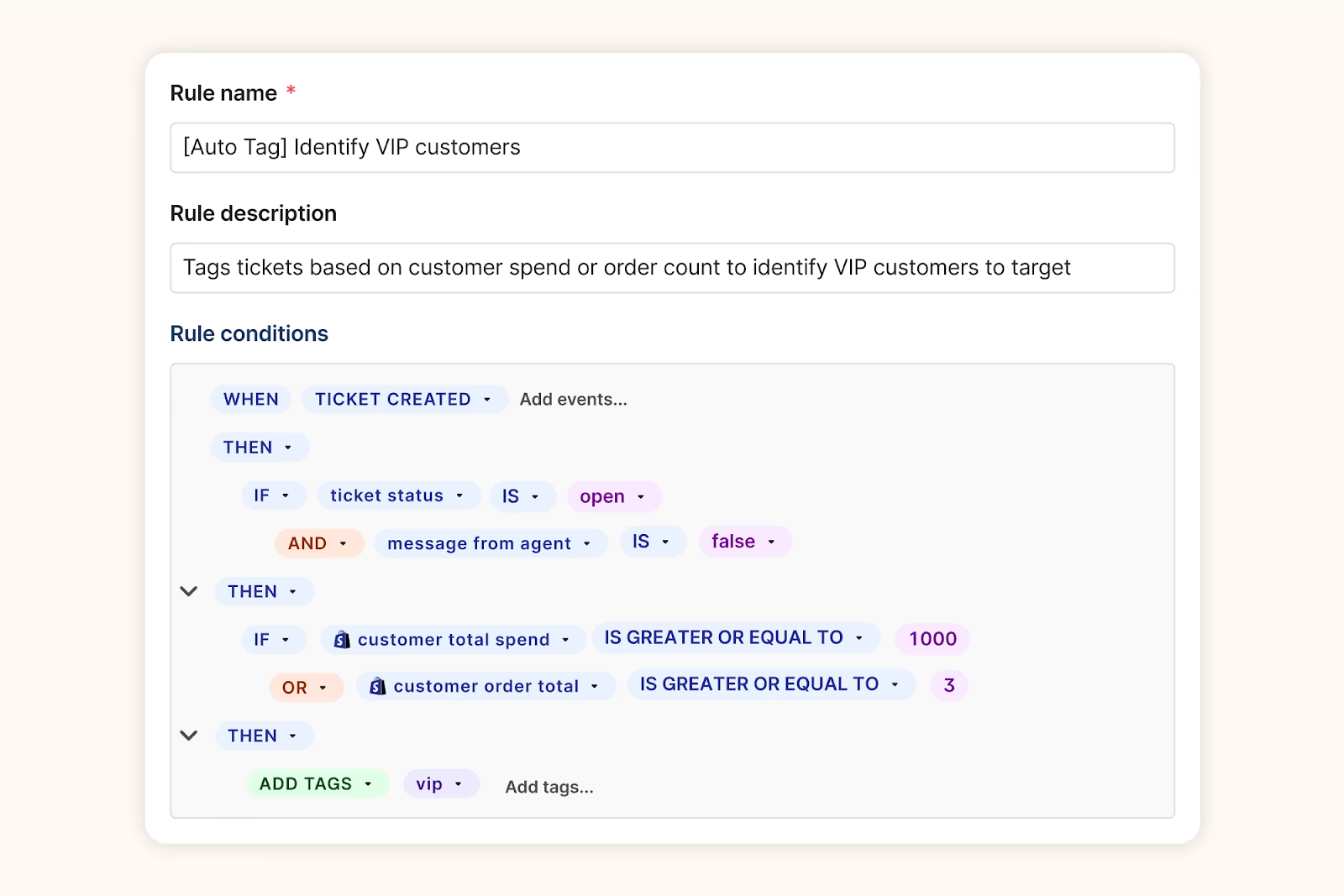
Run your support on autopilot with Gorgias Rules that automatically trigger based on your chosen conditions.
A real-world example: What this looks like in practice
A fast-growing superfood brand came to Atidiv with Gorgias already live, but underutilized. They were answering tickets manually, tracking performance in spreadsheets, and dealing with repeat questions daily.
Within 30 days, Atidiv helped them:
- Build >10 custom macros
- Implement >5 auto-routing and tagging rules
- Clean up and standardize 50+ tags
- Created 15+ executive views
- Launch a real-time performance dashboard
- Reduce first response time by approximately 45%
- Retention analysis using tags
- Surface batch of products with bad taste based on tag trends
And no, they didn’t need to buy any new tools.
It’s not about more tech, it’s about more leverage
Most brands think their next CX win will come from another app or integration. But the real unlock often comes from better use of what they already have.
That’s what Atidiv offers:
- CX teams that are fluent in Gorgias
- Leadership layers that manage performance and QA
- Strategic use of features you’re already paying for
- Flexibility to scale up or down without hiring overhead
The bottom line
You don’t need to overhaul your tech stack. You need a team that can turn Gorgias into a strategic engine for support, growth, and insight.
Atidiv makes it possible, with trained agents, experienced leaders, and a deep understanding of what Gorgias can do when used to its full potential.
→ Want to get more out of the tools you already have? Let’s talk about how Atidiv + Gorgias can transform your support operation.
TL;DR:
- Train your AI like a new hire. Give it tone guidelines, review weekly, and keep refining to stay on-brand.
- Adapt AI to real customer behavior. Adjust tone and timing to improve satisfaction, even if the answer stays the same.
- Use AI to drive sales, not just support. Top brands use it to answer product questions and guide pre-purchase decisions.
- Start small and improve as you go. Begin with one common question and test often to build momentum.
If you’ve been side-eyeing AI and wondering if it’s just hype, you’re not alone. A lot of CX leaders were skeptical, too:
“I used to be the loudest skeptic,” said Amber van den Berg, Head of CX at Wildride. “I was worried it would feel cold and robotic, completely disconnected from the warm, personal vibe we’d worked so hard to build.”
But fast forward to today, and teams at Wildride, OLIPOP, bareMinerals, and Love Wellness are using AI to do more than just deflect tickets. They’re…
- Cutting costs without cutting corners
- Driving revenue before a customer even checks out
- Delivering fast, on-brand, human-feeling support at scale
Here are six lessons you can steal from the brands doing it best.
{{lead-magnet-1}}
1. Think of AI as your sidekick
We need to get one point across clearly: AI isn’t about replacing your support team.
For brands with lean CX teams, burnout is a serious problem. And it’s one of the biggest reasons AI adoption is accelerating.
“I was constantly seeing the same frustrating inquiries—sponsorship asks, bachelorette party freebies, PR requests… 45% of our tickets were these kinds of messages,” said Nancy Sayo, Director of Consumer Services at global beauty brand, bareMinerals.
“Once I realized AI could handle them with kindness and consistency without pulling in my team, I was sold.”
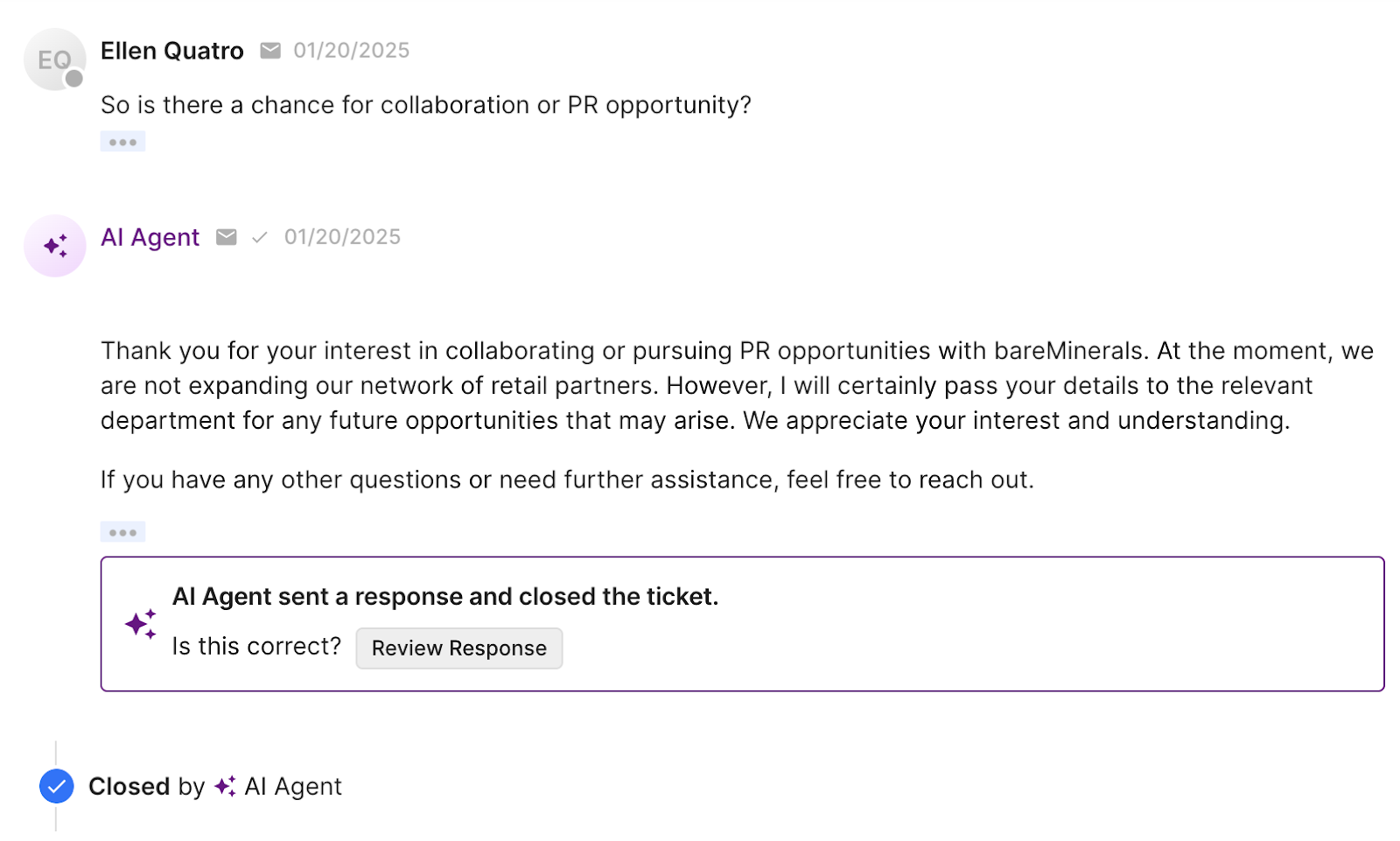
Instead of thinking of AI as a replacement, think of it as an enhancement.
It’s about making sure your CX team doesn’t burn out answering the same five questions 50 times a day.
With Gorgias AI Agent, Nancy’s team now uses automation to absorb the high-volume, low-conversion noise, freeing up their seasoned agents to focus on real revenue-driving moments.
“We use AI to handle low-complexity tickets. And we route higher-value customers to our human sales team—people who’ve been doing makeup for over a decade and really know what they’re doing.”
TL;DR? The smartest teams use AI to take the weight of repetitive tickets (“Do you ship internationally?” “Can I get free samples?”) off their shoulders so agents can focus on conversations that build trust, drive loyalty, and increase LTV.
2. Train your AI like a team member
While you can get started with AI quickly for simple queries, we don't recommend using it “out of the box.” And honestly, that’s a good thing.
Brands that “set it and forget it” are missing the point. Because if you want AI to sound exactly like your brand—not like every other chatbot on the internet—you need to give it the same context you’d give a new hire.
Amber van den Berg, Head of Customer Experience at baby carrier brand Wildride, wrote out detailed tone guidelines, including:
- Dos and don’ts for customer conversations
- Approved Dutch-to-English translations
- Example replies for nuanced, emotional questions
- Pre-written macros for product recs and delivery issues

“Lisa, our AI agent, is basically a super well-trained intern who never sleeps. I give her the same updates I give my human team, and I review Lisa’s conversations every week,” said Amber. “If something feels off-brand, too robotic, or just not Wildride enough, I tweak it.”
The feedback never stops, and that’s what makes Lisa so effective.
Related: Meet Auto QA: Quality checks are here to stay
3. Let AI mirror the pacing of real conversations
Even when AI gets it right, customers might not always feel like it did. Especially if the tone of voice is off or if your customer base just isn’t used to automation.
“Our CSAT was low at first,” said Nancy Sayo of bareMinerals. “Even if the response was accurate and beautifully written, our older customers just didn’t want to interact with AI.”
So Nancy’s team adapted. Rather than giving customers a blunt “no” to product requests, they restructured the flow:
“If someone asked for free product, we’d say, ‘We’ll send this to the team and follow up.’ Then, 3-5 days later, the AI would close the loop. It softened the blow and made customers feel heard—even if the answer didn’t change.”
That simple tweak raised CSAT and created a better customer experience without requiring a human to step in.
Inside Gorgias, teams like bareMinerals review AI performance weekly, not just to catch mistakes, but to optimize for tone, satisfaction, and brand feel. They use:
- CSAT reporting to spot dips in sentiment
- Conversation analytics to flag where AI may be losing trust
- Macro editing to quickly adjust common replies
AI gives you the flexibility to test, tweak, and tailor your approach in a way traditional support channels never could.

4. Use AI to drive sales—not just support
Too many CX teams still treat AI like a glorified autoresponder. But the most forward-thinking brands are using it to guide shoppers to checkout.
“Our customers often ask: ‘Which carrier is better for warm weather?’ or ‘Will this fit both me and my taller partner?’” said Amber van den Berg, Head of CX at Wildride. “Lisa doesn’t just answer—she gives context, recommends features, and highlights small touches like the fact that a diaper fits in the side pocket.”
With Gorgias Shopping Assistant, brands can turn AI into a proactive sales assistant—answering product questions in real time, referencing what’s in the customer’s cart, and nudging them toward the best option with empathy.
5. CX insights should power the rest of your business
Great support doesn’t stop at the inbox. At Love Wellness, CX is the connective tissue between ecommerce, product, and marketing.
“We meet quarterly with our CX and ecommerce teams to review top questions, objections, and patterns,” said Mckay Elliot, Director of Amazon at Love Wellness. “That feedback goes straight into product development and PDP optimizations on both DTC and Amazon.”
But it’s not just a quarterly ritual. Feedback sharing is embedded in the culture, and they do this with a Slack channel dedicated to customer feedback.
Dropping in insights is part of the team’s daily and weekly responsibilities. It helps everyone stay close to the content, and it sparks real collaboration on what we can improve. They then use those insights to improve ad messaging and content.
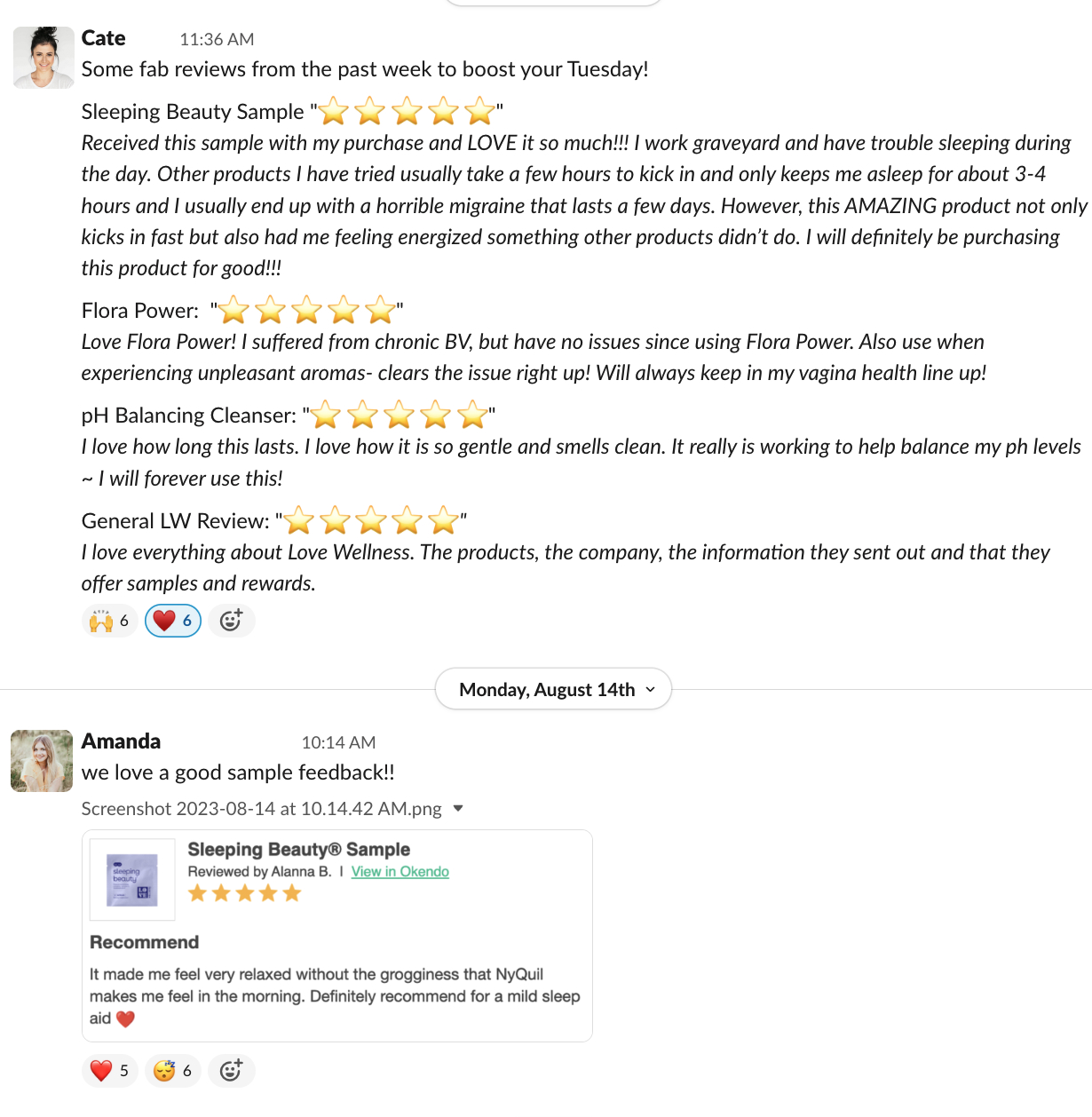
Your team has so much data they can review between channels like email, SMS, chat, and social media—both compliments and complaints. You need to be willing to listen to every customer’s needs.
Read more: Why customer service is important (according to a VP of CX)
6. Don’t overthink it, start small
One of the biggest mistakes brands make with AI? Trying to do too much, too soon.
Rolling out AI should feel like a phased launch, not a switch flip. The best results come from starting simple, testing often, and iterating as you go.
“We started with one simple question—‘Do you ship internationally?’—and built from there,” said Amber van den Berg of Wildride.
“And if it doesn’t work? You can always turn it off,” added Anne Dyer, Sr. Manager of CX & Loyalty Marketing at OLIPOP. “The key is to test, review, and keep iterating. AI should enhance your human experience, not replace it.”
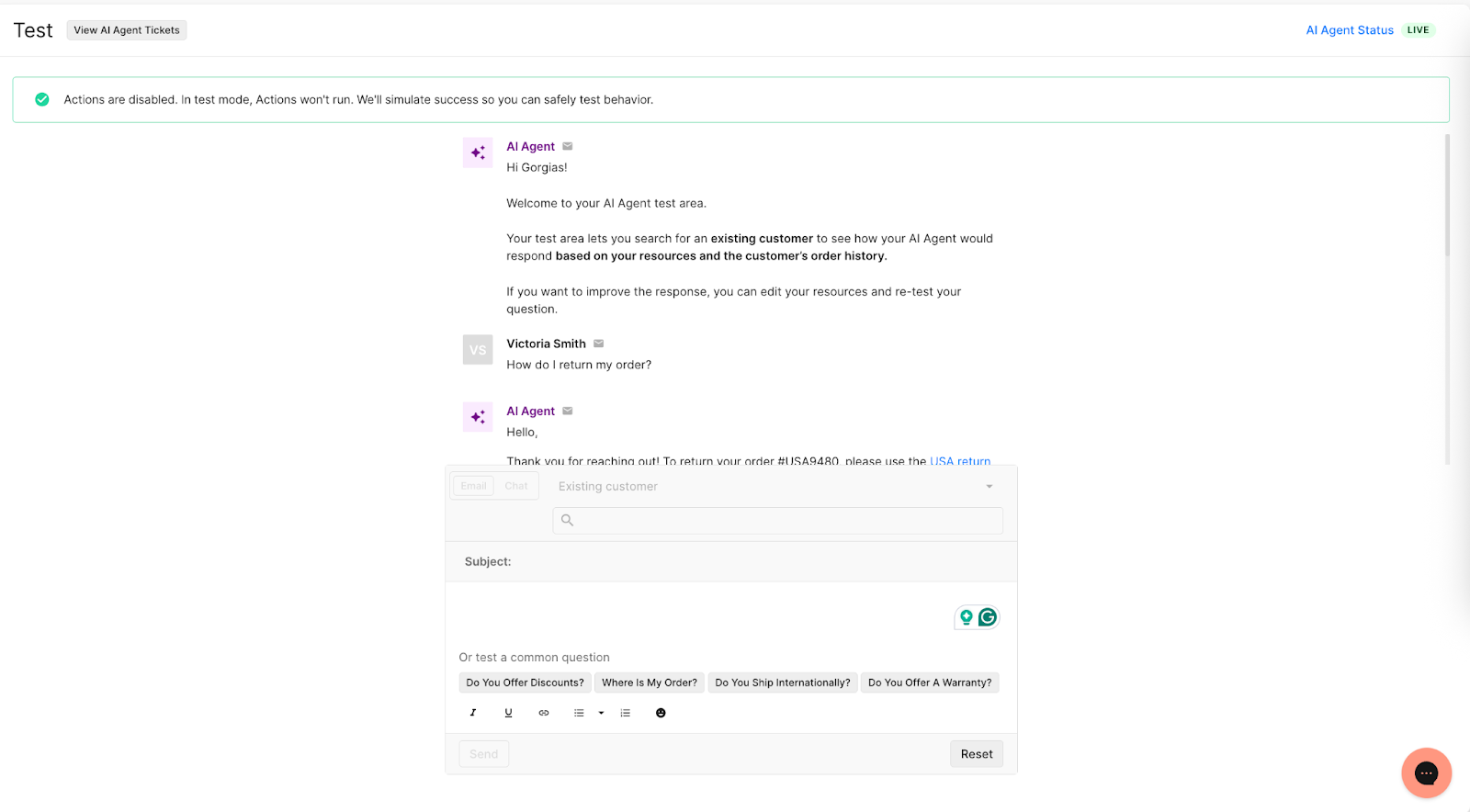
If your helpdesk supports it, start in a test environment to preview answers before going live. Then roll out automation gradually by channel, topic, or ticket type and QA every step of the way.
For most brands, the best starting point is high-volume, low-complexity tickets like:
- “Where’s my order?”
- Subscription pauses or cancellations
- Returns and exchanges
- Store policies and FAQs
You don’t need to solve everything on day 1. Just commit to one question, one channel, and one hour per week. That’s where real momentum starts.
Related: Store policies by industry, explained: What to include for every vertical
How do you measure the impact of AI in CX?
Most CX teams are used to tracking classic metrics like ticket volume and CSAT. But when AI enters the mix, your definition of success shifts. It’s not all about how fast you handle tickets anymore—it’s about how customers feel after conversations with AI, team efficiency, and the quality of every interaction.
Here are the metric CX teams used to track without AI—and what they track now with AI:
|
Metrics Tracked Before AI |
Metrics Tracked After AI |
|---|---|
|
Total ticket volume |
% of tickets resolved by AI |
|
Average first response time |
Response time by channel (AI vs. human) |
|
CSAT (overall) |
CSAT + sentiment on AI-resolved tickets |
|
Tickets per agent/hour |
Time saved per agent + resolution quality |
|
Burnout rate or turnover |
Agent satisfaction or eNPS |
The best use of AI makes space for human touch
AI isn’t here to replace your CX team. It’s here to free them up, so they can focus on deeper, more meaningful conversations that build loyalty and drive revenue.
So if you’re on the fence, start small. Train it. Review weekly. Build the muscle.
You’ll be surprised how quickly AI becomes your favorite intern.
If you want more tips from the experts featured today, you can:
Newsletter Signup
The best in CX and ecommerce, right to your inbox
Featured articles
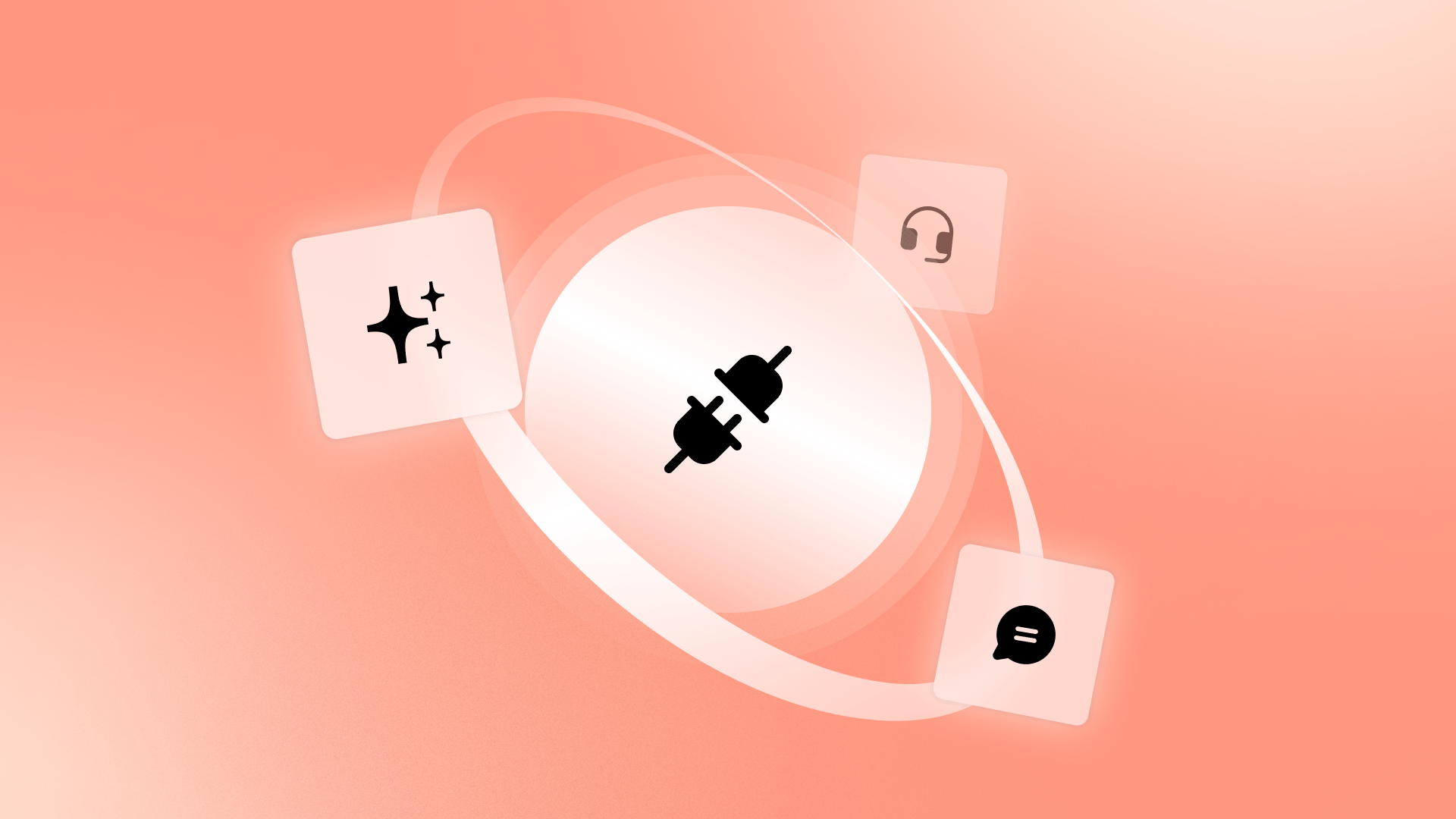
Why Consolidated Doesn’t Mean Compromised: Top 3 Myths Debunked
TL;DR:
- Consolidation doesn’t mean giving up flexibility. The right all-in-one tools are modular and API-friendly, so teams can customize and integrate freely.
- You gain efficiency, not lose features. One platform means fewer gaps, less manual work, and faster support.
- It’s more affordable and faster than you think. Consolidation cuts hidden costs and delivers ROI quickly.
- Gorgias is built for ecommerce. With a deep Shopify integration and 100+ apps to connect to, it can scale with CX teams, no matter their size.
If your CX team is juggling a dozen different tools just to answer one support ticket, you’re not alone. According to our 2025 Ecommerce Trends report, 42.28% of ecommerce professionals use six or more tools every day. Plus, nearly 40% spend $5,000–$50,000 annually on their tech stack.
That’s a lot of money and a lot of tabs.
It’s no wonder “tech stack fatigue” is setting in. But while many brands are ready to simplify, there’s still hesitation around consolidation. The biggest fear is that all-in-one tools are too rigid or basic to handle the complexity of a growing business.
But the truth is, consolidation doesn’t mean compromise. When done right, it means clarity, speed, and control. It also means fewer tools, smoother workflows, and faster customer support.
Let’s bust some myths and show you what smart consolidation looks like.
{{lead-magnet-1}}
Myth #1: “All-in-one tools are too rigid”
One of the biggest blockers to consolidation is compatibility. Fifty-two percent of ecommerce professionals said they hesitate to consolidate because they’re worried about tools not playing nicely together.
That hesitation makes sense. In the past, “all-in-one” tools meant being locked into a single provider’s ecosystem, with limited integrations and rigid workflows. For CX teams managing fast-moving ops and dozens of tools, from email and returns to reviews and subscriptions, the idea of losing flexibility is a non-starter.
Reality: All-in-one tools are modular, not monolithic
Modern support platforms have moved away from monolithic systems and toward modular API-friendly designs that give brands control instead of constraints.
If you choose the right platform, consolidation doesn’t lead to a loss of functionality. Instead, it means getting a better-connected system that works smarter.
Just ask Audien Hearing who uses Gorgias’s open API to create an integration with its warehouse software to manage returns directly in Gorgias instead of a shared Google spreadsheet.
They also combine the power of Gorgias Voice with an integration to Aircall to resolve thousands of questions a day. This integration enables agents to access customer and order data directly from Gorgias while on a call—staying in one workspace.
“It's amazing that we're able to create any custom solutions we want with Gorgias's open API. Gorgias is way more than a typical helpdesk if you utilize the features it offers,” says Zoe Kahn, VP of Retention and Customer Experience at Audien Hearing.
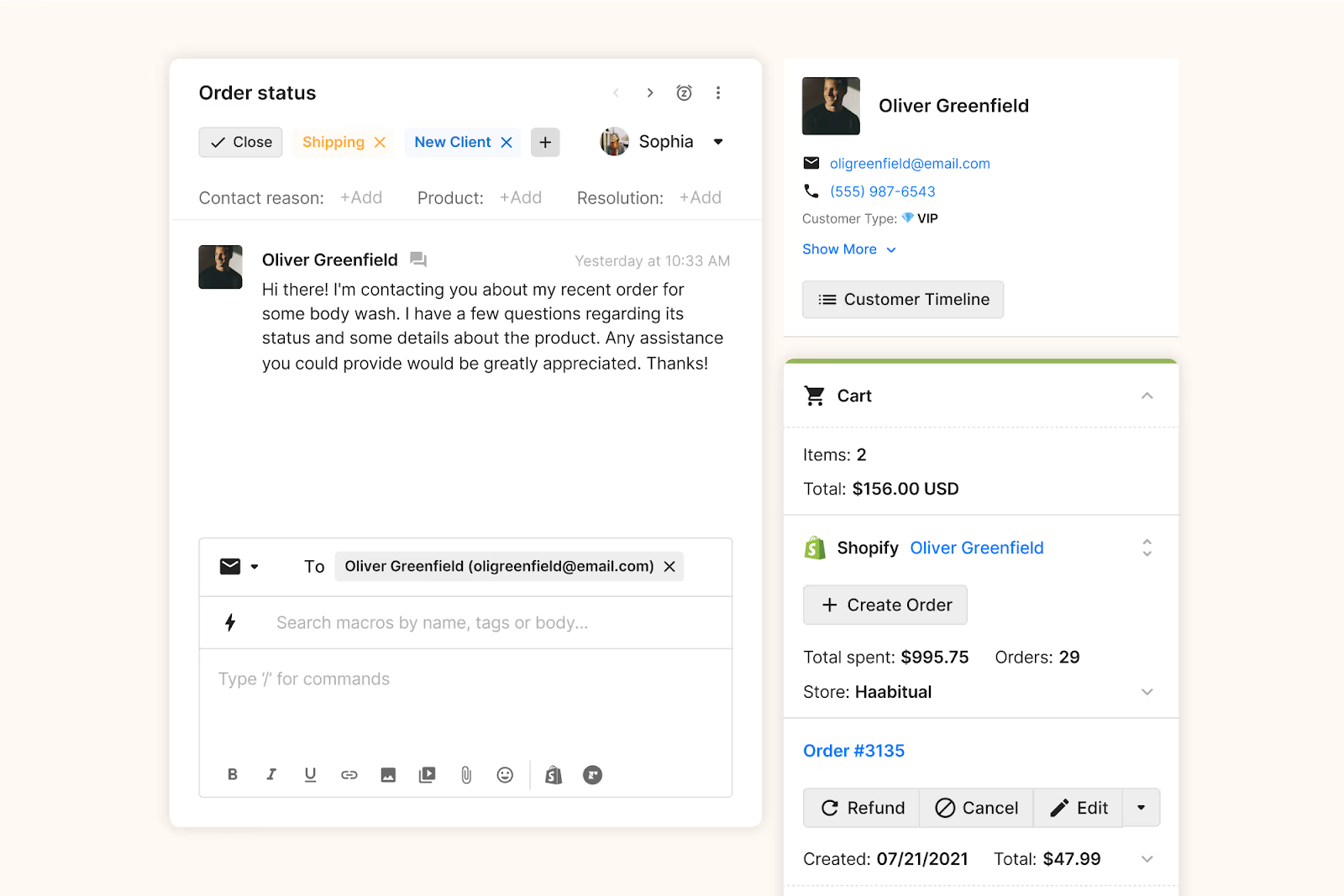
Read more: The Gorgias & Shopify integration: 8 features your support team will love
Myth #2: “We’ll lose features we rely on”
Another common hesitation around consolidation is the risk of putting all your eggs in one basket. If everything runs through one tool, what happens when something breaks or you need to pivot?
It’s understandable, many teams worry that one tool can’t possibly do everything well. Maybe it won’t support their preferred channels, or the automation will be too limited. Or maybe they’ve been burned by a platform that promised too much and delivered too little.
Reality: All-in-one tools reduce gaps, not capabilities
In reality, consolidating gives CX teams more freedom, not less.
Instead of stitching together half a dozen tools and hoping they sync, teams using a single, well-integrated platform gain:
- A centralized view of the customer
- Cleaner workflows with fewer manual handoffs
- Less time spent training agents on multiple systems
- And fewer gaps in data or context
Under one system, your team doesn’t have to jump between tabs anymore. They can just focus on helping customers, quickly and consistently.
Take it from Osea Malibu, a seaweed‑infused skincare brand that transformed their support quality assurance process using Gorgias Auto QA. Their manual QA system was time-consuming and couldn’t scale as ticket volume surged. But the switch made impressive improvements:
- QA time reduced by 75%, from over an hour per week to just 15 minutes
- 100% of tickets now automatically quality‑checked, instead of a small manual sample
- CSAT increased (during BFCM) to 4.74/5, reflecting better consistency and faster resolutions

“Gorgias Auto QA saved me so much time. What used to take over an hour now only takes 15 minutes a week, and I no longer have to worry about spreadsheets.” —Sare Sahagun, Customer Care Manager at Osea Malibu
Myth #3: “Consolidation is expensive and time-consuming”
On paper, consolidation sounds smart. But 47.6% of ecommerce professionals say cost is a barrier, and 40.3% worry about the time it takes to implement a new system.
Sticking with a fragmented stack isn’t exactly cheap or quick, either. Between training new agents, managing multiple vendors, and patching together tools that don’t fully sync, the hidden costs add up fast.
Reality: Consolidation reduces overhead and busywork
It’s not actually consolidation that drains your resources—it’s complexity. And with Gorgias, simplifying pays off fast.
Trove Brands is a standout example. After centralizing their support with Gorgias, they implemented AI-powered order cancellation workflows and saw:
- 45% of tickets automated, cutting manual workload
- 70% reduction in failed order cancellations, saving costs and frustration
- 99.93% faster first response time during BFCM 2024 (from 11 hours 30 minutes to just 30 seconds)
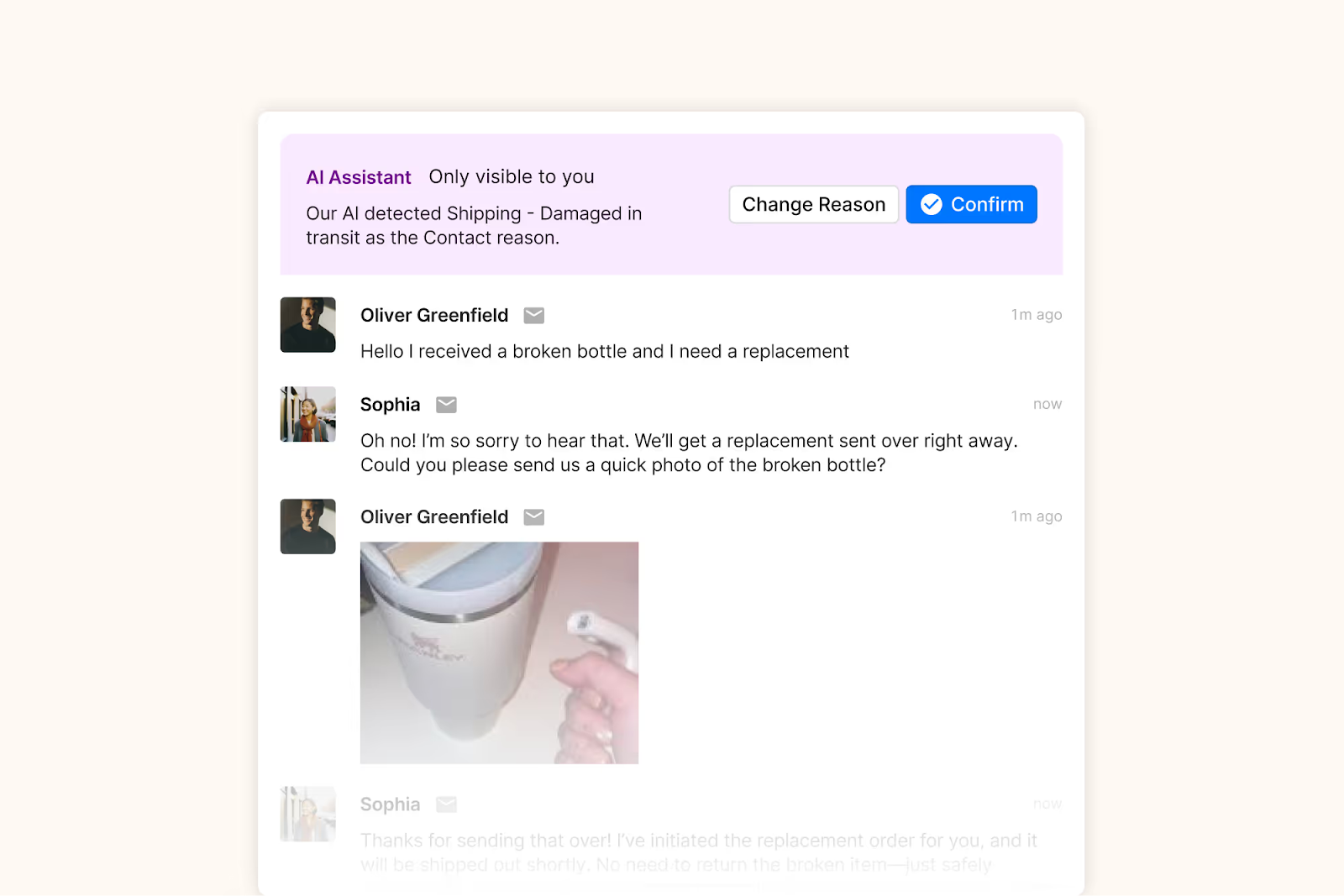
Related: The hidden cost of not adopting AI in ecommerce
What’s the top benefit of consolidating your tech stack?
The biggest benefit of fewer tools is efficiency. It’s also a direct line to real business impact.
Constant tab-switching and duplicate data entry mean way too much time spent managing platforms instead of helping customers.
When you consolidate your tech stack, your team spends less time learning new systems, chasing down info, or waiting for one tool to sync with another.
Instead, they get everything they need in one place, faster replies, smoother workflows, and happier customers.
And that all adds up to better CSAT, lower churn, and a support team that’s finally free to focus on what matters.
What makes Gorgias different from other all-in-one platforms?
Gorgias is built specifically for ecommerce brands, with features that reflect the way CX teams actually work.
As Shopify’s only Premier Partner for customer support, we offer a native integration that pulls in key order data and context automatically, so agents have everything they need without switching platforms. That means conversations, AI, automation, revenue data, and reporting are in one place.
Our open app ecosystem allows you to connect to 100+ tools like Shopify, Klaviyo, Yotpo, and Recharge in just a few clicks. Need more customization? Our add-ons, like AI Agent and Voice let you level up at your own pace.
Whether you're handling hundreds of tickets a week or scaling globally, Gorgias adapts—so you don’t have to keep reinventing your support stack every six months.
Time to rethink your stack
Dr. Bronner’s, a globally recognized organic soap and personal care brand, made the switch from Salesforce to Gorgias to keep up with growing support demands, and it paid off fast.
Here are the results they saw with Gorgias:
- $100,000 saved in the first year by cutting licensing and developer costs
- 45% of all customer queries automated after just 2 months
- 74% reduction in ticket resolution time, powering faster support
- 11% increase in CSAT, thanks to quicker, more personalized responses
“We don’t get boxed out because we only work with Gorgias tools. Gorgias deeply understands the needs of CX, Shopify, and orders and how those tools work together so that it’s really easy for us to work across the board throughout those tools and that didn’t exist in our last setup at all,” says Emily McEnany, Senior CX Manager at Dr. Bronner’s.
If you’re still stitching together half a dozen tools to handle support, it might be time to ask: Is your tech stack helping you or holding you back?
With Gorgias, you get centralization and flexibility, so your team can move faster, serve better, and scale smarter.
Book a demo or dive into the full 2025 Ecommerce Trends report to see how other brands are rethinking their stacks.
{{lead-magnet-2}}
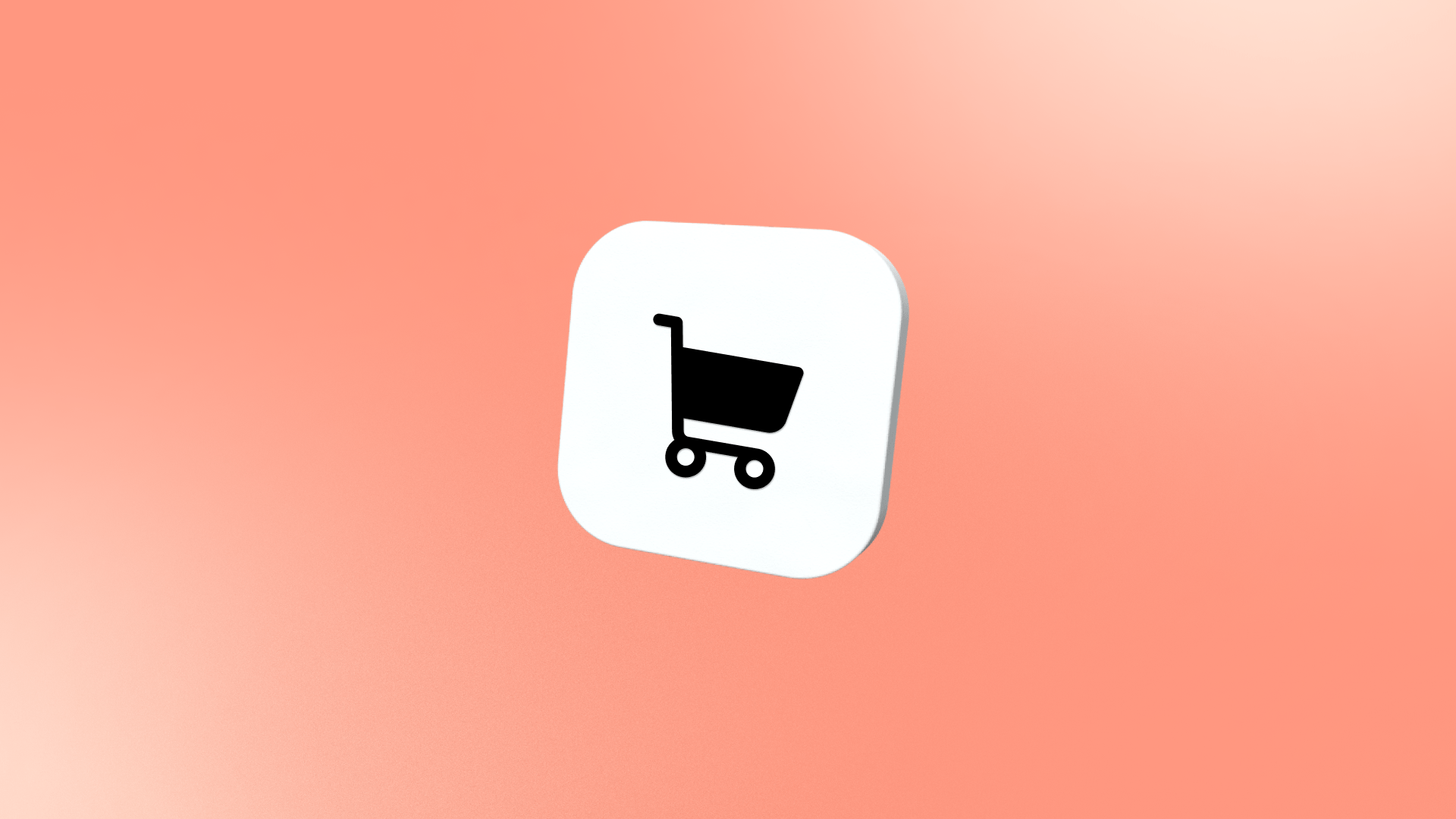
You’re Missing Out on Sales Without an AI Shopping Assistant—Here’s Why
TL;DR:
- Shoppers won’t wait for help—so they leave. Without instant answers, you’re losing sales to hesitation and unanswered questions.
- AI shopping assistants step in right away. They guide, recommend, and resolve concerns in real time, 24/7.
- They boost conversions and AOV. Brands like Pepper and TUSHY saw up to 62% more conversions after adding one.
- They go beyond chatbots. AI assistants proactively sell, using browsing behavior to tailor messages and close more carts.
- Gorgias Shopping Assistant is built for Shopify brands. It starts conversations, mirrors your brand voice, uses browsing data, suggests products, and sends dynamic discounts.
Shoppers aren’t always going to reach out and ask the questions they have, especially if they’re going to have to wait for a response from a CX team.
That means you’re losing sales to friction, indecision, or information gaps.
In 2025, the average cart abandonment rate is 70.19%. But if you can find an AI tool that doubles as a support and sales agent, it could make all the difference.
Gorgias’s Shopping Assistant, for example, has brought a 62% uplift in conversion rate for brands that implement it.
Ahead, learn where you can leverage an AI shopping assistant to increase conversions and craft better purchase experiences.
What is an AI shopping assistant?
An AI shopping assistant is a chat tool powered by AI to provide pre-sales support for shoppers. It can answer questions, make product recommendations, and help guide shoppers in the right direction if they’re stuck.
Gorgias's Shopping Assistant is a powerful, hyper-personalized AI tool built for Shopify brands. Unlike other AI tools, Shopping Assistant starts conversations with customers, not the other way around. It’s uniquely tailored for each customer by tracking browsing behavior during each session and remembering what shoppers say, keeping conversations natural and recommendations relevant.
It’ll also chat with shoppers in your own brand voice, as its responses are pulled right from the knowledge you feed it.
At which point do brands lose sales in the customer journey?
The stages of the customer journey where common drop-off points occur for brands that lack proactive support include:
- Discovery (casual browsing)
- Interested (considering making a purchase)
- Ready to buy (strong purchase intent)
1) Discovery (casual browsing)
There’s a big chance that shoppers—especially first-timers—have questions, but aren’t willing to wait for a human to get back to them. And when your CX team is off the clock? Customers will likely leave altogether.
An AI shopping assistant can help you engage customers right away, even outside your business hours.
Bra brand Pepper uses Gorgias Shopping Assistant to help shoppers find their perfect size. When it detects hesitation, Shopping Assistant points customers to the sizing guide.
This proactive approach creates an easy path for conversation and sets the precedent that any questions will be answered immediately, providing a better––and less confusing––experience.
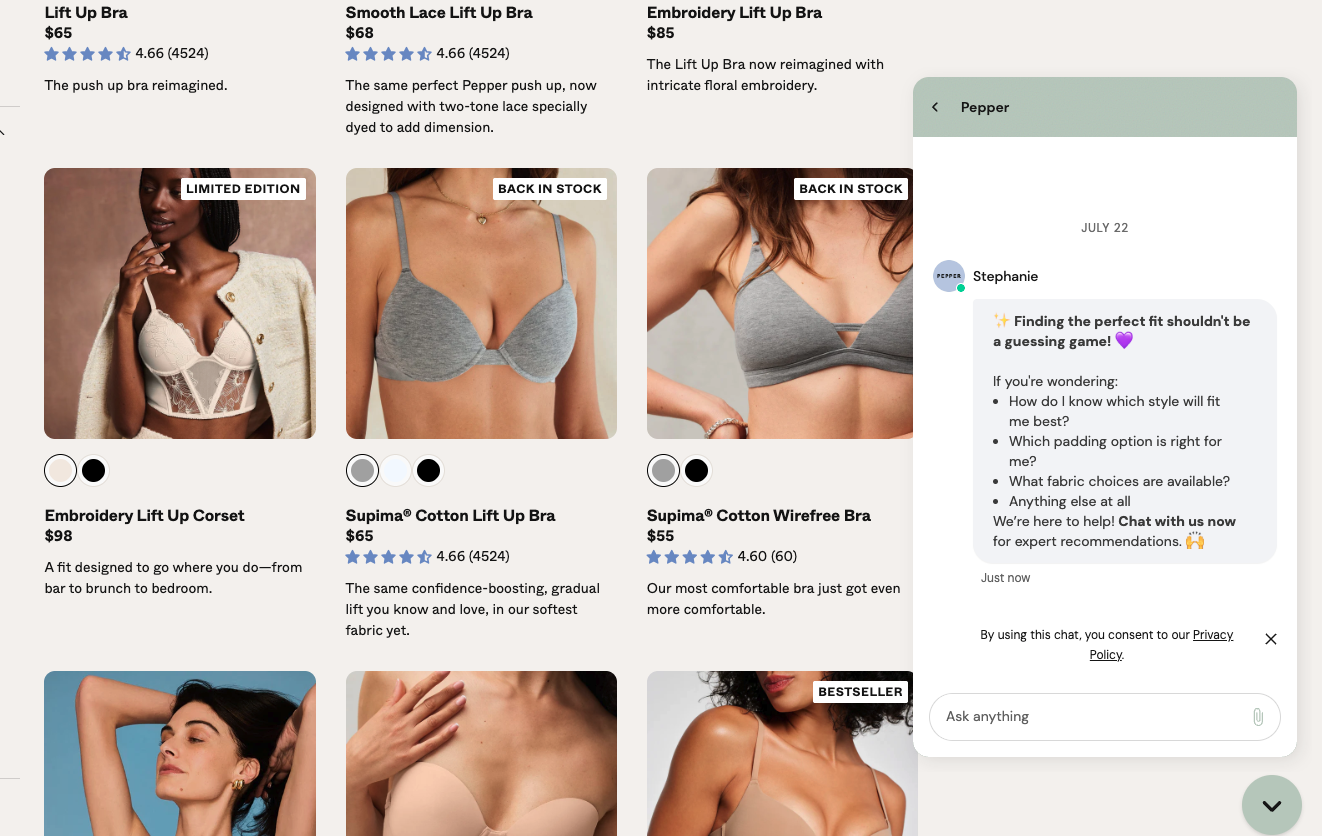
“With Shopping Assistant, we’re not just putting information in our customers’ hands; we’re putting bras in their hands,” says Gabrielle McWhirter, CX Operations Lead at Pepper.
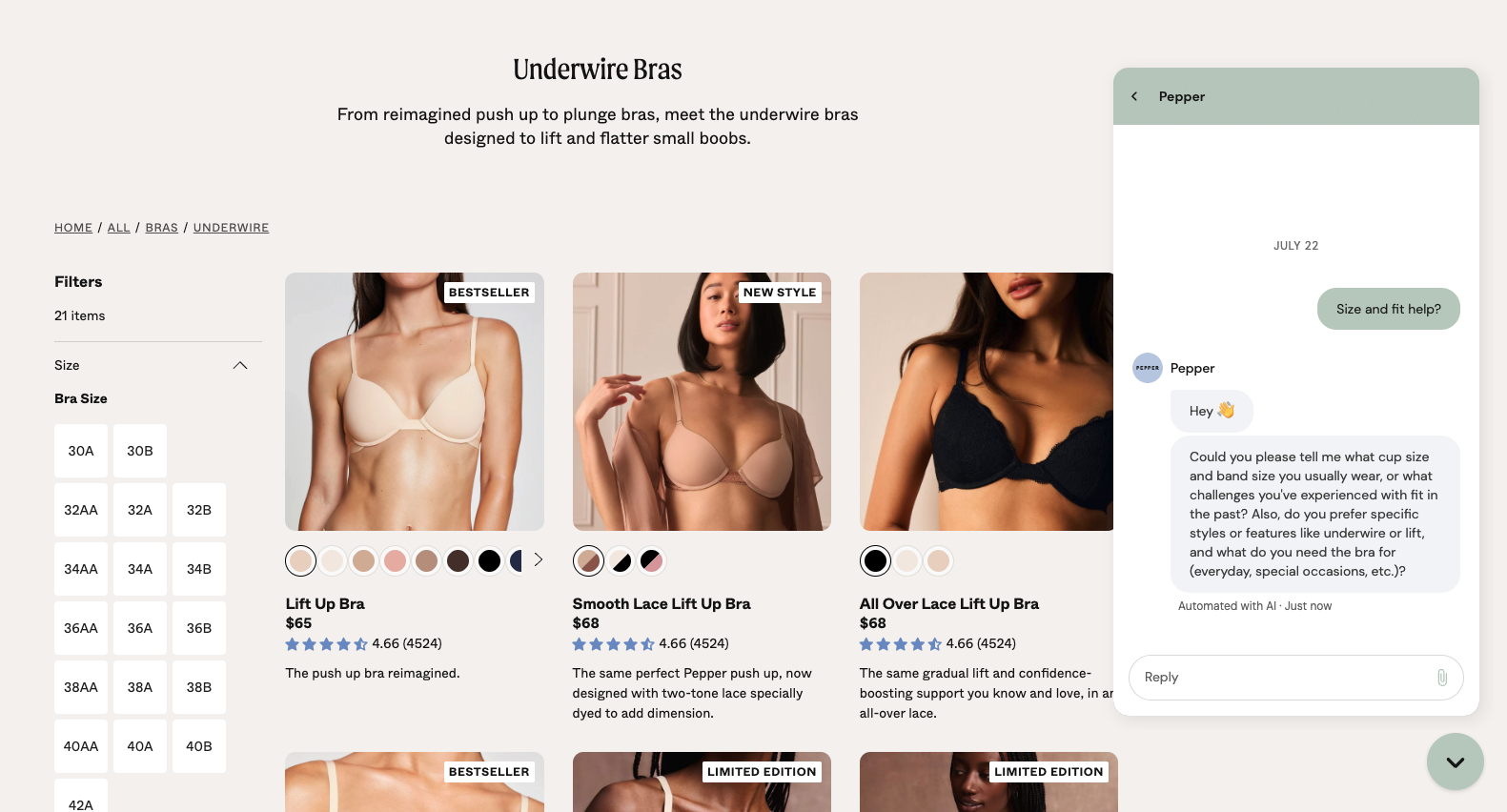
Impact these metrics 📈
For shoppers in the Discovery stage, using a Shopping Assistant boosts clicks and time on site and reduces bounce rate. It does this by surfacing specific questions on relevant product pages. Pepper boosted their conversion rate by 19% with Gorgias Shopping Assistant.
Read more: How Pepper’s AI Agent automates 54% of support and converts 19% of conversations
2) Interested (considering making a purchase)
In a retail environment, a salesperson can give shoppers recommendations by asking a few questions, especially if they’re unsure of what to buy.
AI shopping assistants have the ability to mirror those in-person shopping experiences by interacting with customers in real-time to help them find their perfect match.
Shoppers can give as much (e.g., “Help! What dress is suitable for a wedding reception?”) or as little information as they’d like, and the AI shopping assistant will do the rest.
It’s possible even for questions that are slightly vague, like a customer who types in “how to make up” without any other context:

For example, jewelry shop Caitlyn Minimalist uses Shopping Assistant to recommend products, engaging interested customers and bringing them closer to a purchase.
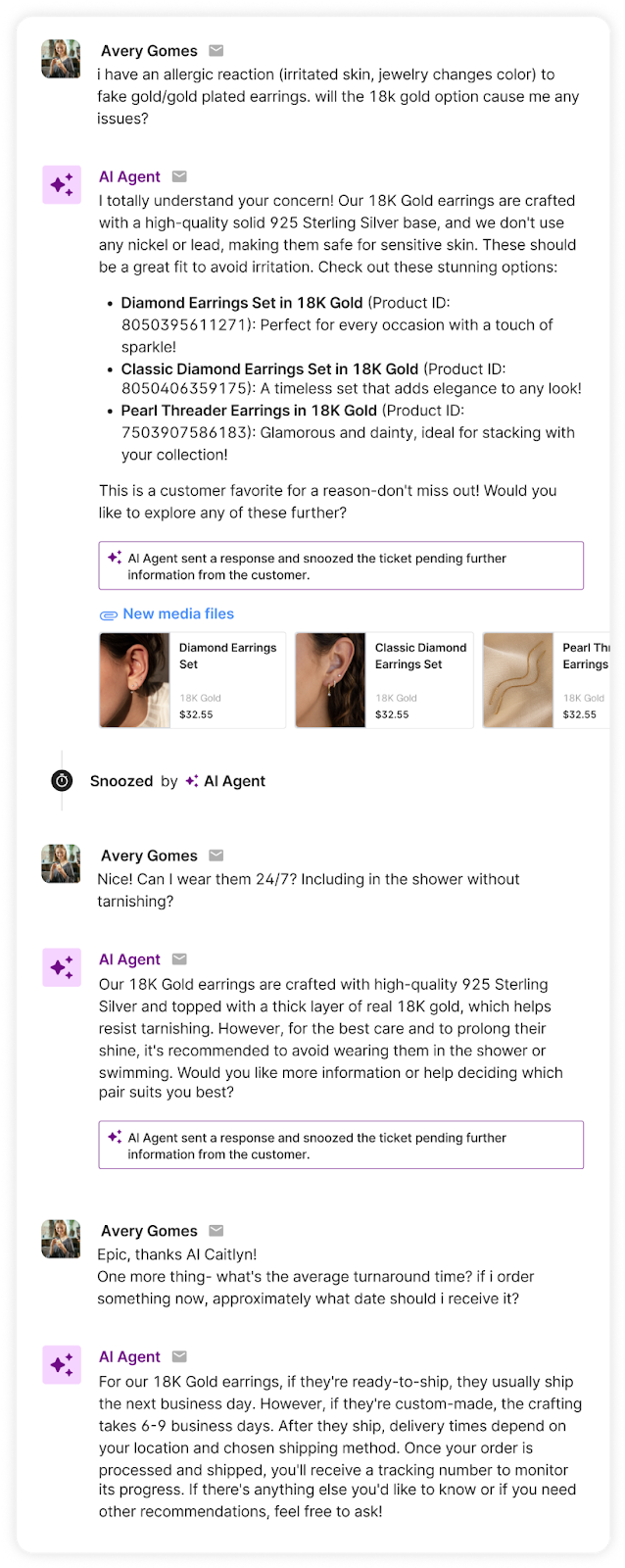
“As a result of Shopping Assistant, we've seen a measurable lift in AOV through more meaningful customer interactions,” says Anthony Ponce, Head of Customer Experience at Caitlyn Minimalist.
“Our clients are provided the right information at the right time, creating a seamless experience that builds trust and drives confident purchases."
Impact these metrics 📈
According to data from Gorgias, email is the highest volume support channel, with ~25% of that tied to pre-sales. AI shopping assistants tackle these pre-sales asks and also upsell by recommending complementary products. This can lead to a boost in average order value (AOV) and conversion rate.
Read more: How Caitlyn Minimalist uses Shopping Assistant to turn single purchases into jewelry collections
3) Ready to buy (strong purchase intent)
The main reasons customers abandoned a cart in 2025 include:
- Extra costs (like shipping, fees, taxes) - 39%
- Delivery times were too slow - 21%
- Checkout was too complicated or long - 18%
- Didn’t like return policy - 15%
An AI shopping assistant can mitigate or resolve these issues. They resolve crucial questions—like delivery time or return policies—that need in-the-moment answers. By alleviating pre-sale concerns, they give customers the confidence to make a purchase.
For example, bidet brand TUSHY leverages Shopping Assistant to answer questions about toilet compatibility that might flush a pending sale.
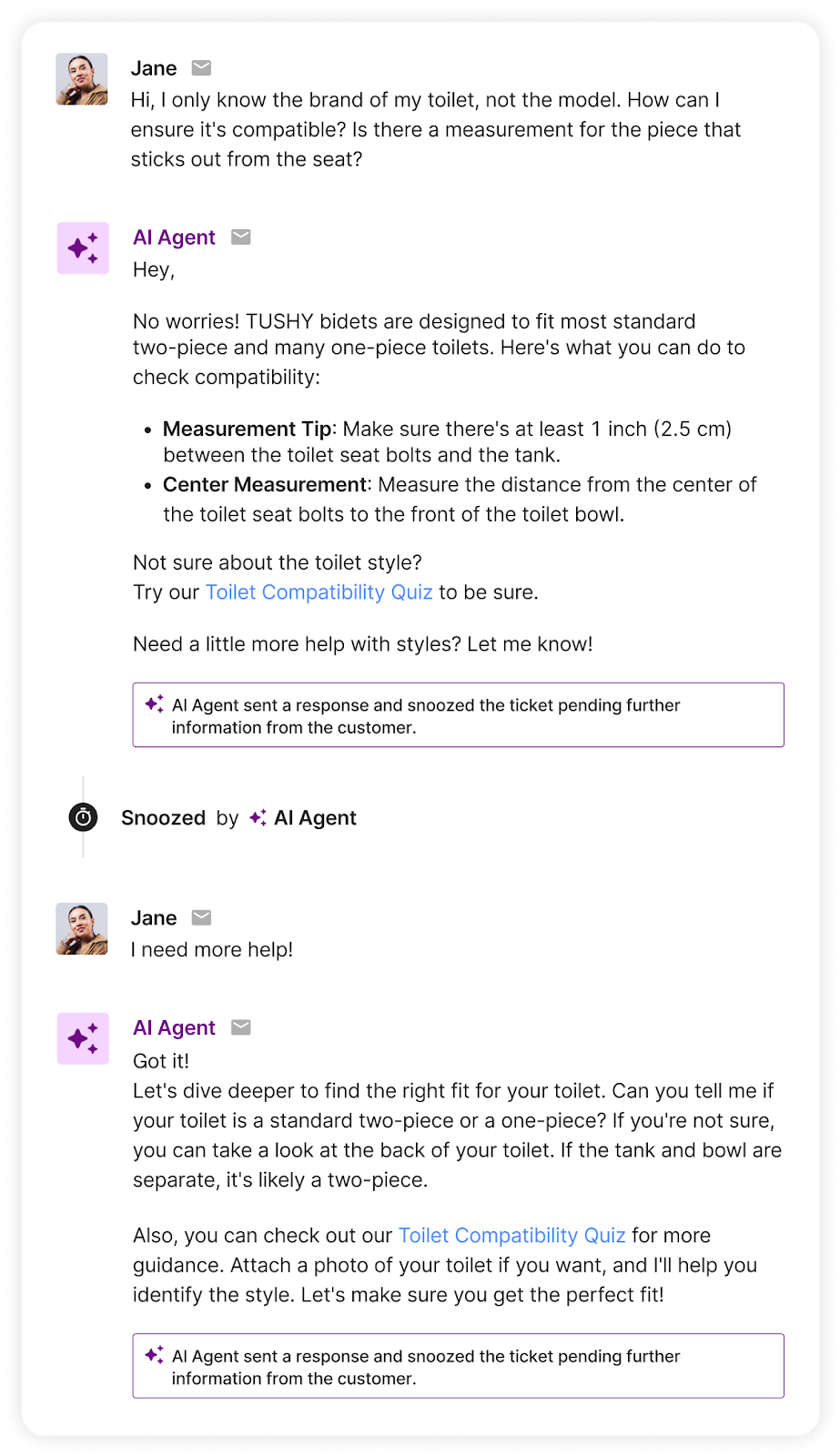
Aside from quelling customer concerns, Shopping Assistant can also send discount codes to close deals. Unlike general discount codes you find across the internet, these discounts are uniquely generated for each customer, keeping them engaged and on your site.
Impact these metrics 📈
AI shopping assistants can reduce cart abandonment rate and increase conversion rate. Gorgias Shopping Assistant adjusts to your sales strategy by sending customers discount codes that can be the final nudge to checkout.
Why traditional chatbots don’t cut it anymore
Most AI tools are built just for support. They deflect tickets and answer FAQs, but they’re not built to sell.
Shopping Assistant proves that support teams can also drive revenue by upselling, suggesting exchanges, and giving shoppers the confidence to try a brand for the first time (or to give it another shot).
Gorgias’s AI Shopping Assistant uses context-based decision making and looks for specific behavioral signals:
- Products viewed - Which product pages have they visited?
- Pages views - What pages have they explored, like FAQs, reviews or categories?
- Current page - Which page are they currently browsing?
- Purchase history – What have they bought from this brand before?
- Cart data - What items are currently in their cart?
|
Feature |
Traditional Chatbot |
AI Shopping Assistant |
|---|---|---|
|
Deflect tickets |
✅ |
✅ |
|
Answer frequently asked questions |
✅ |
✅ |
|
Upselling |
❌ |
✅ |
|
Proactively reaching out to offer support |
❌ |
✅ |
|
Use context-based signals to guide shoppers to checkout |
❌ |
✅ |
Improve conversions with Gorgias Shopping Assistant
Ultimately, the cost of not adopting AI can be higher than the investment of implementing it. 77.2% of ecommerce professionals use AI to improve their work. Why not extend those benefits to your customers?
AI Shopping Assistants help you create better customer experiences overall. These tools help reduce customer effort, increase average order value, save would-be-lost sales, and create more customer touchpoints.
Hire the always-on Shopping Assistant that never misses a sale.
{{lead-magnet-1}}
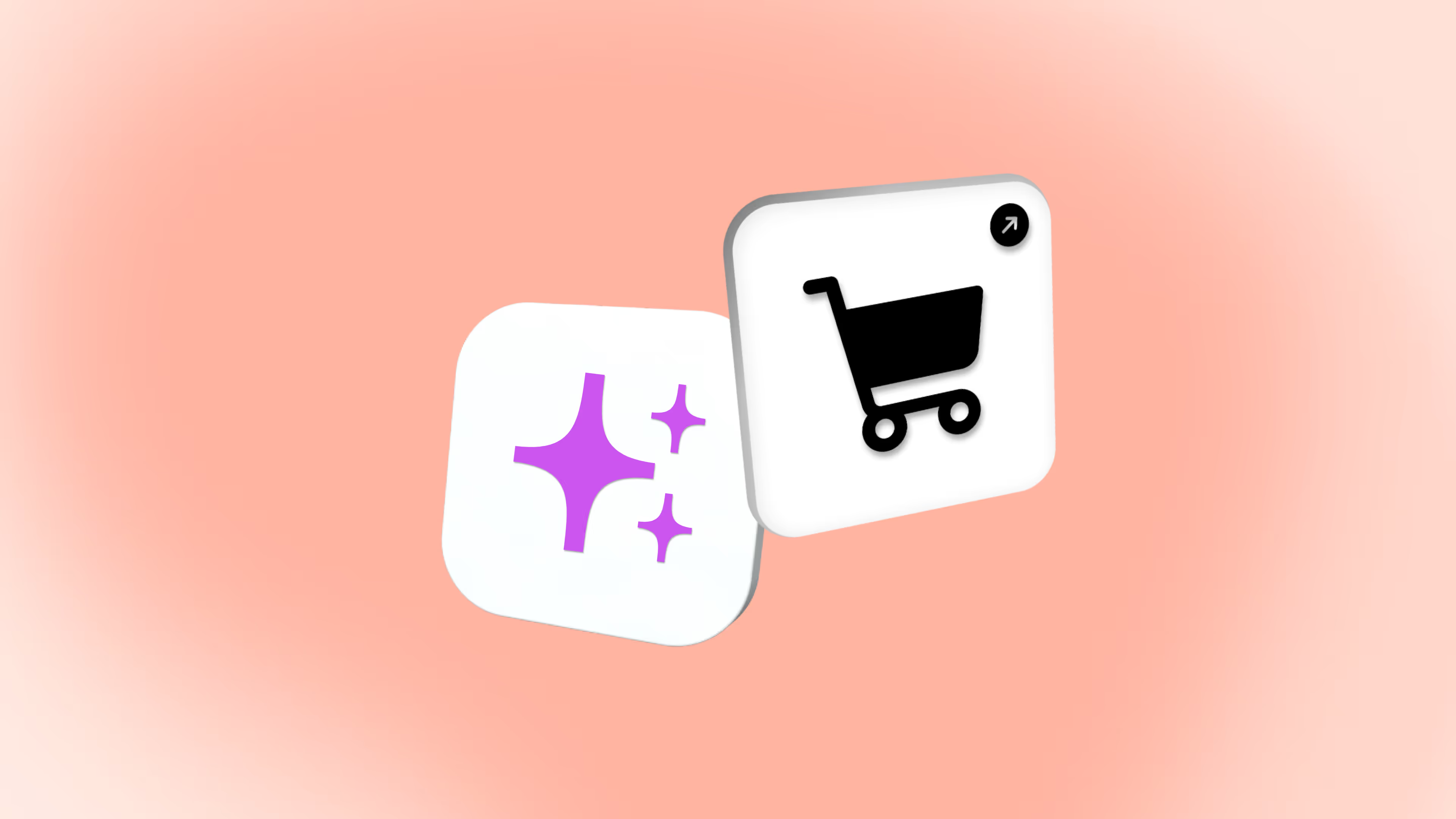
Guide More Shoppers to Checkout with Conversation-Led AI
TL;DR:
- Shopping Assistant is your new AI sales closer. It jumps in when shoppers hesitate, delivering real-time, personalized support that drives conversions.
- It boosts revenue by acting like your best salesperson. It knows when to recommend, upsell, or offer a discount, without being pushy.
- It remembers what shoppers do mid-session. That means smarter conversations, better suggestions, and bigger order values.
- It’s already delivering results. Brands using Shopping Assistant are seeing 62% more conversions, 10% higher AOV, and 5x ROI.
- You control the strategy. Customize how it promotes discounts, when it steps in, and how it speaks.
What’s the common factor between shoppers debating between products and considering a splurge? Hesitation.
Today’s shoppers are overwhelmed with choices. They don’t want to be left to figure things out on their own. They want guidance.
But most brands are missing that crucial piece of the puzzle. They lack a strategy that accompanies shoppers on their journey. A tool that encourages shoppers to proceed to checkout. And, ultimately, a customer experience devoid of a sales approach.
That’s why we built Shopping Assistant, an AI Agent that proactively engages browsers, offers context-aware product recommendations, and turns hesitation into conversions in real time.
And it’s working. Brands using Shopping Assistant are seeing a 62% uplift in conversion, 10% higher average order value, and 5x ROI.
Here’s a closer look at what’s behind the magic.
AI-powered shopping, built for sales
Most traditional chatbots passively wait for questions and deliver answers that aren’t personalized to each shopper's preferences.
Unlike these bots, Shopping Assistant reads real-time signals like pages viewed, cart contents, and conversation tone. This results in a solution that not only offers support but also offers personalized, proactive selling. This enables Shopping Assistant to continuously refine and adjust its playbook, evolving with each shopper as their journey matures.
Here’s how Shopping Assistant engages with customers across the shopping journey:
- Discovery: Gathers preferences and educates.
- Interested: Makes targeted product suggestions.
- Ready to Buy: Assists with checkout, nudges purchases with discounts.
Take this example below. When a customer vaguely asks “how to make up,” Shopping Assistant interprets it as a sign of interest in makeup products and recommends a starter kit.
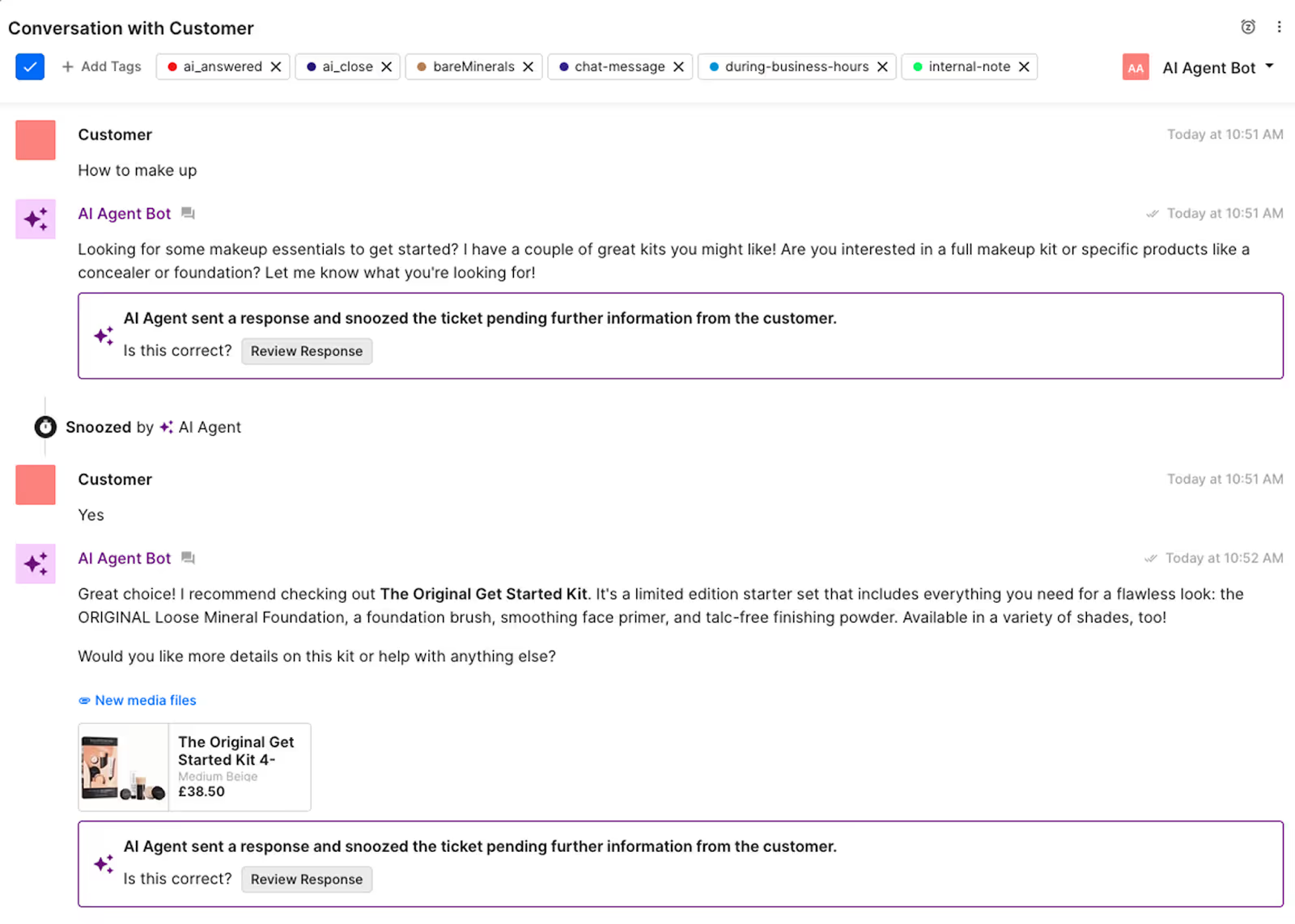
Personalization that understands you
Where traditional bots reset with every message, Shopping Assistant does the opposite. It has built-in context-aware intelligence that remembers what shoppers have clicked, viewed, and added to their cart during a session.
This enables natural, relevant, and persuasive conversations that truly resonate with each shopper. It goes beyond reading messages and observes behavior to adapt its responses.
That means it knows if someone has:
- Viewed three red lipsticks but didn’t add to cart
- Repeatedly checked sizing info for the same dress
- Added two serums to their cart after browsing dry skin FAQs
With plenty of context to work with, Shopping Assistant is not only smarter but also more profitable than the average chatbot. It drives more conversions with product recommendations and lifts average order value with timely upsells based on what’s been added to the cart or viewed.
Here’s what it looks like in action: When a customer engages through a product page, Shopping Assistant recommends a matching outfit, suggesting it’s aware of alternate product variants and the customer's likely interest in that style.
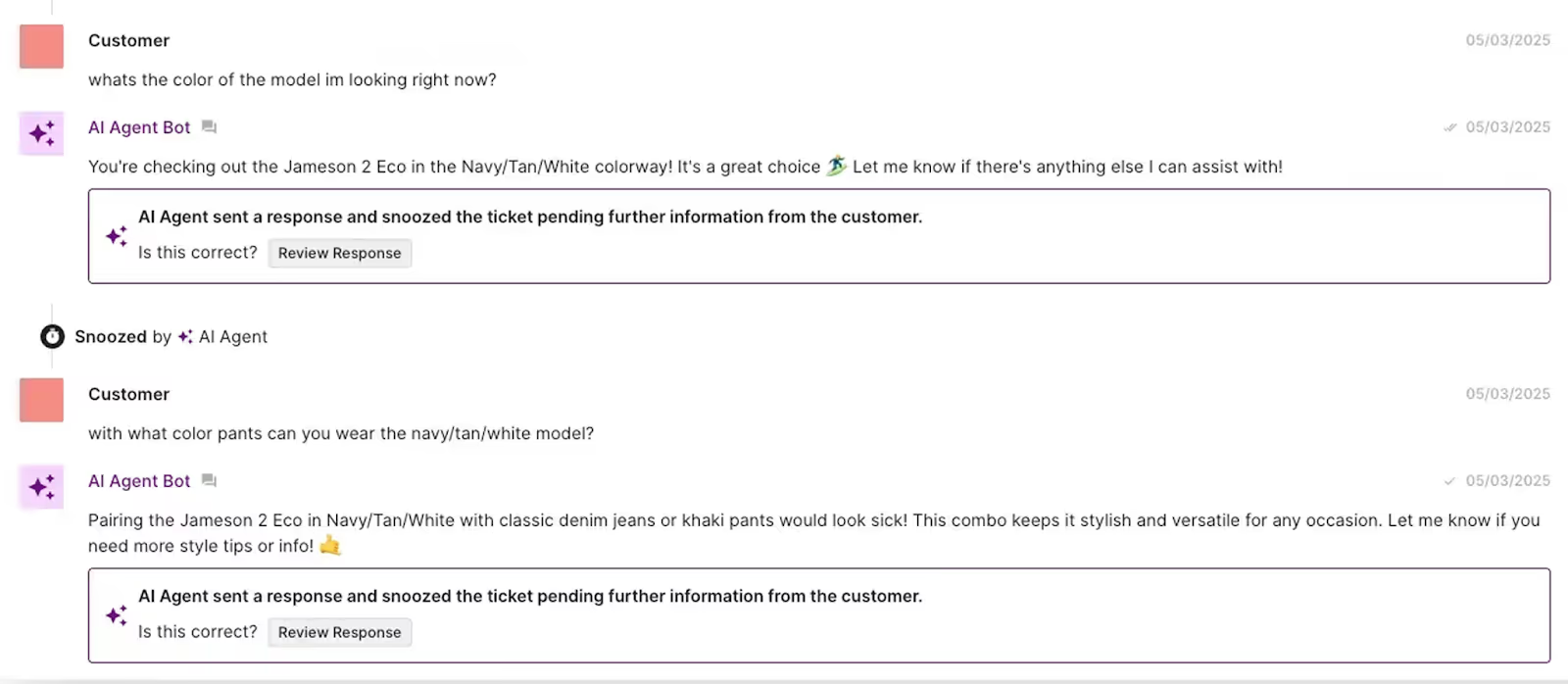
Dynamic discounts that convert without undercutting
Promotions are powerful, but they’re not one-size-fits-all.
With Shopping Assistant, merchants can define their discount strategy to align with their brand. These strategies can range from offering no deals to using aggressive promotions.
Once the strategy is set, Shopping Assistant waits for hesitation and customer intent to trigger a discount, firing it at the most conversion-worthy moment.
Proactive engagement in 3 ways
Shopping Assistant initiates conversations. It’s built to engage shoppers, spotting when they linger or show signs of confusion, stepping in with timely, personalized help.
Every second counts in ecommerce. If a shopper pauses on a product page or is left scrolling through an endless search results page, Shopping Assistant detects it in real-time and reaches out with a relevant prompt like:
- “Need help picking the right shade?”
- “Want to know our return policy before you buy?”
Here’s how Shopping Assistant reduces drop-off, builds confidence, and drives faster decision-making in three different ways.
1. Suggested product questions
Shopping Assistant automatically triggers commonly asked questions depending on the product currently being viewed. In one click, shoppers can get the answer to the question they’re curious about. This combats hesitation caused by a lack of information, resulting in more confident conversions.
2. Ask Anything Input
When shoppers land on the homepage, it’s easy to become overwhelmed and not know where to navigate. The Ask Anything Input provides an easy way to start a conversation with Shopping Assistant and get the guidance they need.
Shopping Assistant can refine its response to the customer based on the page context. For example, when the customer is on a product page, Shopping Assistant knows exactly what product is being asked about.
3. Trigger on Search
Shopping Assistant can step in to offer pinpointed help based on a shopper’s search query. Instead of scrolling through a results page, Shopping Assistant triggers a message based on what the shopper entered, offering an easier and faster way to find what they need.
Smart recommendations and relevant upsells
Shopping Assistant’s suggestions are rooted in real context: what the shopper has viewed, added to cart, or asked about. Whether they’re exploring a specific product line or revisiting a category they’ve shown interest in, Shopping Assistant delivers relevant upsells and complementary items that make sense for the customer.
This personalized approach to upselling increases cart size without feeling forced—it’s smart, seamless, and sales-driven.
Shopping Assistant can even turn vague product questions into upsell opportunities. By asking questions, it learns more about an individual to come up with recommendations that best fit their preferences.
Try Shopping Assistant today
Shopping Assistant is transforming the way shoppers engage and helping ecommerce brands sell more effectively. Through smarter conversations and real-time personalization, it turns every interaction into an opportunity to convert, build trust, and drive revenue.
{{lead-magnet-1}}
Further reading

Customer Loyalty: Bringing The Human Touch Back To Ecommerce
Ecommerce has become awash with digital bells and whistles. Technology has no doubt enhanced the shopper experience but the rapid rate of digital innovation has had a profound effect on customer expectations. By 2020, customers expect brands to automatically personalize experiences to address (not just predict) their current – and future – needs.
But, although customers expect more in terms of tech, they still crave the person-to-person connection. In fact, 75% of consumers want to see more human interaction, not less.
At LoyaltyLion we know that bringing back this human-touch depends on providing a good customer experience. Clearly, a worthwhile cause, as studies show that 86% of shoppers who received great customer care are more likely to repeat purchase. By going the extra mile to treat your shoppers as people – rather than numbers – you can secure a faithful, constant customer base.
Here are three insights that will help you bring the human touch back to your online store.
Use Data To Personalize Communications
Each customer is unique. They interact with your brand in different ways, all while having their own personal needs and desires. When a customer feels that you have taken the time to understand their unique requirements, they will trust and value your brand more.
Data and personalization go hand in hand. By using member information to learn how customers engage with your loyalty program, you can understand their feelings towards your brand and react accordingly. Being data-driven is the key to true e-commerce success.
One golden opportunity to personalize your communications this is through targeted emails. Use your Gorgias dashboard to identify past interactions and purchases, as well as a customer’s loyalty points balance. You can then use that member data to create bespoke rewards that you can send right to your customer’s inbox.
Maybe you’ve noticed that they keep eyeing a specific product range? If so, give them discounts on new products in that collection to tempt them to back to buy again. Or perhaps you’re aware that they’re just a couple of points away from their next reward. Give them a little nudge to return and receive their reward sooner. For example, LoyaltyLion user Dr. Axe alerts customers when they have rewards waiting to be claimed, and suggests a particular product to redeem that reward on.

Find Ways To Delight Customers
Shoppers love to feel that they’re your only priority and that you care about them on a personal level. They want to feel valued as individuals, not just another number in an extensive database.
Loyalty strategies should incorporate ways to surprise and delight customers. For example, making it easy to offer customers points on their birthday or taking a moment to personally congratulate them when they’ve made a certain number of purchases with you. Beauty Bakerie, for example, offers their customers 500 points on their birthday.

With Connectors for Shopify Flow, it’s easy to use LoyaltyLion and Gorgias to set up triggers that automatically create tickets on a customer’s birthday, reminding a representative to get in touch. It’s the thought that counts and going the extra mile will ensure your customers trust and remember you. Plus, you’ll feel good about it too!
Convert Negative Experiences Into Positive Ones
Customers get frustrated when they feel their complaints aren’t taken seriously. Dissatisfied customers will tell between nine and 15 people if they have a bad brand experience. Using Gorgias’ helpdesk and macros, you can help resolve complaints whilst maintaining a personal touch. For example, ethical online yarn store, Darn Good Yarn uses the helpdesk to analyse and automate how they solve common customer issues, using a whole database of the shopper’s history to address specific queries in a more informed way.
If you are reacting to customers have had a negative experience, your loyalty program can help you demonstrate you care. You might consider offering bonus points or benefits such as free delivery, or moving them up a loyalty tier so that they can unlock more exclusive rewards in the future. These tokens of appreciation can turn a bitter experience into a sweet deal.

Research shows that 94% of customers who have their issues solved painlessly said they would purchase from that company again. This shows that helping customers to solve their problems is key to securing their long-term loyalty. Treat your most valuable customers well by making their shopping experiences as easy as possible. In return, they’ll give you their loyalty.
It’s all about people-to-people
In a world where technology and data can give ecommerce stores a competitive edge, there’s a risk that we could lose touch with the human side of retailing. Human exchanges are still, and always will be, the primary driver of loyalty. So, use digital personalization to your advantage and treat your customers as individuals.

Small engineering team as a competitive advantage
It's been over 3 years since we've started working on the Gorgias helpdesk. The engineering team started with just me (Alex) and then gradually grew to a team of 5 people. We're a small team, but we've accomplished a lot during this period. Here are some stats from 0 code/customers/revenue in Oct 2015 to this:
- Handled over 16 million tickets.
- 2000 daily active sessions with an average length of ~4h each.
- 600 paying customers (companies).
- 17% MoM revenue growth.
Modest numbers to be sure, but we're very proud that people use our product in a big part of their workday and hopefully are becoming more productive while doing so. The whole idea behind our product is to scale customer support with as little resources as possible. Given this, perhaps it's only natural to build our product with a small team as well?

We've been suffering chronically from "not having enough people" - we still do. That forced us to adopt a certain engineering culture that I want to talk about in this post.
When we first started building Gorgias, having just a few people on the team allowed us to progress at a pace where we could collect real feedback from our customers with things that really mattered to them rather than building every feature they ask for. A lot of their asks seemed legitimate, but because we didn't have a lot of people it forced us to prioritize the critical, high impact things first.
Having a small team can act like a barrier that blocks you from building a bloated product.
I want to make more of a case for the above statement, but first I'd like to get a bit more into what we did during the 3 year period.
Once we've build an initial version of the app and got our first customers we quickly realized that building a "second Gmail" is super-hard:
- Communication protocols (email/facebook/etc..) are complicated - we knew that before we even started, but it's difficult to describe the amount of work that needs to get done to make them work correctly. The amount of corner cases and weird protocol quirks is just staggering. In fact I would even go ahead and say that if you're integrating with any kind of external systems (webhooks, REST apis, etc..) then you're going to have a very hard time making them work correctly.
- Having a highly-available and fast app is very hard when you don't have a team of full-time SREs. Scalability was not our big concern when we first started because we didn't have customers, but having an app that was always on was very important, remember the ~4h average session length? It meant that we had to make some architecture and infrastructure decisions that allowed for a high uptime.
- Customer support software space has a very high barrier for entry these days. You need to have certain features before people start to even consider you as a platform. The switching costs are high as well because now you have to train your people on a new app and changing people's routine is hard.
It takes a lot of effort to get to a point where you can compete with the likes of Gmail or Zendesk - both amazing products btw. This was definitely the case for us, for close to 2 years we had only a couple of customers and our product wasn't that good if we're being honest.
So what changed a year ago? To put it simply: our product didn't suck anymore. Or sucked less. It had that minimum set of features and stability that made it attractive enough to our main customer base (Shopify merchants) that were passionate about productivity in the customer support space. That, and the tenacity of our CEO Romain who was convincing everyone that they should use us.
So we started having our second wave of early adopters and all our hard work was finally starting to pay-off!
Now that we had more and bigger customers we were starting to have performance issues, our app was slow, suddenly we were starting to get bombarded by viral facebook posts events or promotional events via an email campaigns, we didn't have enough monitoring in place, our app was pretty inefficient, the main database was a frequent source of congestion. So we started fixing those issues while still receiving numerous feature requests.
Thankfully we didn't actually optimize our code that much before (no customers!) and there were a lot of low hanging fruits at first, but it still put a lot of stress on the team which was becoming tired and overworked and requested to hire more people to build those features and help with the performance issues.
We all agreed that it would be for the best to have more people on the team, but hiring is hard. Competent coders are not just randomly looking for the next gig. SF is also a very expensive city and for a startup that raised $1.5M and a 2 years of money burned we couldn't really compete with other players in town. We've started working with some great devs in Europe, we worked with a few talented interns as well and we tried to get by until we could have more customers and hopefully raise some more money to hire more people.
I could speak more about hiring in the Bay Area and there are a lot of things we did wrong and still have a lot of things to learn, but that's probably an even longer post than this one. But yeah, it's hard to find someone good, it's expensive, etc...
So what is the situation right now? Well, it's not much better. We've raise d a seed extension round from SaaStr with Jason Lemkin and hired a few people in the Growth team, but we still have a hard time hiring in SF or remote. In the meantime we have a small team and want to talk about that.
On the importance of saying NO
I think it's important to realize the advantages of having a smaller team and the single most important super-powers that you're forced to acquire is saying NO more often that you would with a bigger team. If you have a bigger team and say no to a feature, new platform, integration, etc.. it's harder to justify the decision. There are arguments like:
... we have enough devs! They are paid to make features, so what's the problem!?
... the data shows that 50% of our customers are saying that they want this or that feature, we must build it!
But do we absolutely need to build that feature? Are the customers going to be a lot less effective with your product otherwise? Is it going to be a big boost for them or just a nice improvement? Once a feature is there you have to maintain it, fix bugs, improve it, etc.. The thing with data driven decisions is that sometimes it can be biased towards some historical practice that might not have a place in your current world.
Now, I'm not saying that you shouldn't listen to your customers, you absolutely have to, but be sure you understand well what they want before taking action and understanding takes time. Having an artificial brake on your enthusiasm might be a good thing.
Engineers build things, the natural tendency is to accept any technical challenge because of ego, curiosity, fun, etc... It takes discipline to say no and stick by it. A small team is making it easier to do it.
Automation
When you have a small team you're forced to automate a lot more often some of your workflows. You don't have the luxury to do repetitive stuff so:
- You start writing more tests because you don't have people hired in QA and you don't want to repeat the same tests all the time.
- You add optional static typing, linting and other code quality tools because you don't have time to deal with random type errors or have debates about tabs vs spaces.
- You resolve repetitive bugs by doing some refactoring because you can't deal with the constant flow of tech support tickets.
- You make a lot of tasks retry-able so if a HTTP request to facebook failed you don't have to manually retry them.
- Cronjobs, cronjobs everywhere.
Building the right culture is a long process
People that work at Gorgias come from different backgrounds and sometimes it can be challenging to be on the same page. In some cases our work processes are similar to many other companies:
- Github for our code and issues.
- Code-reviews on Reviewable - it's awesome!
- Jenkins to build our docker images and upload them to google cloud.
- Kubernetes to run everything on GKE.
- Sentry to collect production errors.
- Datadog to monitor everything.
But there is so much more than just the above processes to engineering:
- The way we all come together and decide how certain things will be built or fixed.
- The way we talk about a certain API decisions and refactoring.
- The way we deal with an outage and a bad bug that affects our biggest customers.
These things need time to happen to be embedded in your engineering consciousness and if you're the first-time founder (like myself) you also need the time to understand how to operate in this environment.
Management overhead
Never managed a big team so I can't really speak about it's dynamics, but I would expect that because there are more people there is a lot more bandwidth you have to manage, a lot more people have to agree, a lot more politics have to be settled. I don't look forward to that to be honest, the more time I can get away with hiring as little as possible without a big sacrifice of our growth as a company the more I'll try to delay it.
I conclusion I would say that it's totally fine to have a small team, in fact, I'm considering it a competitive advantage that you should try to keep as long as you can.
The irony
I made a point in this post that having a small team is a competitive advantage, but I also think that we are ready to grow our team a bit. Yep, we're hiring!

Scale your Messenger marketing with Octane AI and Gorgias
Facebook Messenger is becoming a new marketing channels for brands. They use it as a way to build personal relationships with customers and to drive higher conversion than traditional email marketing.
Today, we're excited to announce our newest integration: Octane AI.
The challenge with Messenger marketing
When a brand launches a marketing campaigns on Messenger, it typically leads to insane conversion rates. That's why the trend is on the rise.
Another consequence is that a lot of customers respond to promotional Messenger communication. This generates a spike of support requests, that your support team has to deal with.
Our integration with Octane AI lets you handle this support spike directly in Gorgias. Your agents have context about the customer: they see the conversation history before the Messenger conversation (did the customer email you last night?), and allow you to take action, like editing or refunding an order
What you can do with the integration
- Respond to requests from customers, to make sure none of them falls through the cracks
- See the order data from Shopify next to your Messenger conversations
- Automatically respond to common questions, such as "where is my order"
Customers are already using Octane AI and Gorgias. Here's what Live Love Polish has to say about the Octane AI and Gorgias integration:
“We’re really thrilled that Gorgias and Octane AI came together to make the customer service experience over Messenger even better for our customers. Accessible customer service is central to what we do at Live Love Polish. Answering customer questions via Messenger has made our customers happier.”
Do you want to give this a shot? If you use both tools, just connect your Facebook page to your Gorgias account and see the magic happen. If not, create a Gorgias account, or sign up for Octane AI.
Do you have questions? Just hit the chat bubble, our team would love to tell you more about the integration!

Integrate your Smile.io account to Gorgias!
Loyalty programs are widely used amongst e-commerce merchants to grow and maintain market share by improving the number of repeat customers and attracting new ones. These programs come in different formats - from loyalty points to surprise gifts depending on the level of loyalty of each customer - and have proven efficient to help brands build a community of consumers based on the emotional attachment to their identity and values.
As a customer support helpdesk, Gorgias is focused on providing the best experience for both end-consumers and support agents. Consequently, giving access to the most accurate information about your customers’ loyalty status enables your support team to adapt their answers to customer requests.
Thus, it seemed only natural that we partner with Smile.io, a rewards platform that has helped over 20,000 merchants reward their most loyal customers for performing profitable actions.
With Smile, you can create and manage reward programs such as loyalty points, referrals and VIP programs, to build a fruitful relationship with your customers.
Because Gorgias is appreciated for its ease of use and automation tools, we have decided to build a strong integration with Smile: not only can your support team have easy access to all the necessary data about your customers, but they can also use Smile variables in canned responses (or “macros”) and automation rules.
- Display your customers’ Smile profiles next to tickets

- Use Smile variables (loyalty status, points balance, VIP program, referral url) in both your macros and your rules

By integrating your Smile account to Gorgias, you’ll be able to improve yet again not only your customer support but also your customers’ engagement to your brand. Our early adopters of the integration are already thrilled by it!
"We're loving the Smile integration so far! Having access to the variables in the automation features of Gorgias (macros and rules) is a game-changer, especially now that we're focusing on improving our loyalty program. It would be great if the integration went a little further in the future to enable editing loyalty points!"
Chris Storey, Founder and CEO at Dinkydoo
If you're already a Gorgias customer, you can connect Smile directly from your Gorgias account, in the Integrations section. If not, you can create an account here and get started in a few minutes.

Announcing the Okendo integration
Here at Gorgias, our aim is to provide the best customer support tools to our clients, whatever their specific needs. The more you grow, the more we work to develop our offer so that you can benefit from a tailor-made spectrum of integrations. As your business becomes more successful, you need to adapt your website to a fast-growing community of consumers, especially regarding the quality of your reviews and how they appear.
This is why today we are proud to announce our new partnership with Okendo, a customer-marketing platform perfectly suited for high-performance Shopify businesses.
Okendo helps Shopify’s fastest growing companies like oVertone, Paul Evans and Dormify build vibrant customer communities through product ratings & reviews, customer photos/videos and Q&A.
Along with this, Okendo gives you the tools to leverage customer generated content across other marketing channels such as Google Search, Google Shopping, Facebook and Instagram.
Since one of the key advantages of using Gorgias is to manage all your customer support in one dashboard, we decided to design a straight-to-the-point integration:
If a customer leaves low rating review such as < 3 stars and/or with negative sentiment, Okendo can automatically create a ticket in Gorgias. This way, your staff can quickly engage in a conversation with them to understand what went wrong, and address the issue immediately.

We believe this integration will take your customer support teams to the next level, as Okendo has already convinced some of our key clients.
"One of our biggest assets is our unique customer community, so being able to maintain it as active and engaged as possible is key for our business. And making sure that we address any negative experience efficiently and in no time is just as important: this is exactly what the Okendo integration within Gorgias has enabled us to do, by automatically creating a ticket for these cases with the review displayed right next to it."
Dan Appelstein, Founder & CEO at BeGummy
"Aside from being excellent at building shopper trust, reviews enable us to identify customers who, for whatever reason, have had a less than stellar experience. The Okendo + Gorgias integration enables us to flag these instances and automatically assign a Gorgias ticket to a member of our Client Services Team, so that we can follow up and do our best to assist them with whatever issues they're encountering. This integration, along with Okendo’s consistent availability and unwavering support, have made the integration between these two platforms seamless and successful!"
Jae Sutherland, Director of Client Service at oVertone
If you're already a Gorgias customer, we can introduce you to Okendo to implement the integration directly from your Okendo account. If not, you can create an account here and get started in a few minutes.

How Campus Protein built a multi-million dollar business
The supplement industry is not often the first thing that comes to mind when looking to start a new business. It’s crowded, the barriers to entry are low, the margins are thin, and there are some established and well-known brands with large budgets to outspend competitors.
And yet, Campus Protein, a provider of supplement to college students that started in a dorm room in 2010, has managed to carve itself a highly profitable niche and power its way to millions of dollars in revenue.
No, there’s no magic sauce or secret weapon that helped them do it. They have the same access to resources as everyone else. In fact, they have a smaller team than older brands in the space.
The only difference is they focused on one thing that others in the industry weren’t, the customer experience. This is the story of how they did that and dominated behemoths like GNC in colleges across the US.

Identifying The Problem
Before coming up with the idea, founder Russell Saks was just another sophomore at Indiana University. After joining a fraternity, his new friends convinced him to start hitting the gym.
As Russell started getting into fitness, he noticed that every month his friends would head to the local supplements store to purchase $200 to $300 worth of protein and workout drinks. These were the same people who always complained that they didn’t have beer money on the weekends. Yet here they were, spending hundreds of dollars on supplements without batting an eyelid.
In any industry as crowded as the supplement industry, there are always cheaper options. You can go online and buy your supplements at a much lower price than at the local store. However, the drawback is that you have to wait for it. And, as Russell found out, college students never planned ahead and always needed their next tub of protein powder instantly.
Ever the entrepreneur, Russell figured there was an opportunity here. If he could combine the affordability of online prices with the same-day delivery of the local store, he had a business. All he had to do was bulk order product from a low-cost site in advance, store it locally, and then redistribute it to students when they needed it.
As with any business, those initial days were rough. Yes, there was demand and Russell would often sell out each batch soon after they came in, but the margins were razor thin. To maintain cost-effectiveness, Russell sometimes had to take a loss on certain products.
On top of that, Russell found that his life was getting consumed by the fledgling business. To scale it up, he needed help. His friend and first business partner (now Chief Sales Officer), Mike Yewdell, was a fellow student at Indiana University with lots of connections. With his network, they quickly became the go-to source for supplements on campus.
Russell’s next stop was his high school friend (now business partner and CMO), Tarun Singh, who was studying in Boston University at the time. Tarun noticed the same problems at his school and quickly expanded Campus Protein to his school and then the entire Boston area.
The final piece fell into place when they entered into a business competition and won $100,000 to scale up. With the up-front money, they could negotiate deals with supplement makers to improve their margins, and expand to more college to increase sales.
Today, Campus Protein is in over 300 colleges across the US and shows no signs of slowing down. But none of that would have happened if Russell hadn’t been hyper-focused on a certain type of customer and their needs.

Customer Experience As A Growth Channel
One thing Russell learned early on was that college students had very specific needs. Thus, they craved a personalized experience. They needed help with what supplements to buy based on their goals and budget.
At the local supplement stores, Russell noticed that they couldn’t get any of that. Firstly, they sold to everyone so they didn’t have any expertise specific to the college student market. Secondly, they were trained to sell as much product as possible, so they’d often push supplements that weren’t right for the students.
Russell realized that Campus Protein needed to really understand the needs of a college student to own the market. That meant the company needed to hire students who were into fitness. And so the Campus Rep program was born.
A Campus Rep's main job is sales and marketing. They grow awareness for the brand and encourage help other students achieve their fitness goals.
By recruiting Reps in each college, Campus Protein could keep their core team lean while maintaining a large salesforce on the ground.
This has been the real key to their growth. These Reps are their ideal customers, and they hang out with other prospective customers. Thus, they provide a customer experience that’s far better than anything other brands can offer.
Imagine you’re a college student. Before Campus Protein came along, you had to figure out which products to buy, got pressured into buying unnecessary stuff, and ended up with very little money left over.
Today, you probably have a Campus Protein rep in your gym, wearing a branded tank. He’s giving out free tasters, providing you with workout tips and nutrition advice, listens to your goals, and hands you a card with a link where you can buy exactly what you need for much less. How’s that for customer experience?

Extending The Experience Online
Campus Protein may be marketing offline with their campus reps but all their sales come from their Shopify website. That’s the best way for them to scale.
Here’s how it works - they have warehouses across the country where they stock product. Because of their deep customer understanding, they know exactly what to stock and what not to stock. The campus reps then go around building awareness, and students head to the website to make their purchase. Because of the warehouse network, they get their products pretty quickly.
Because the actual sale is made online, the website becomes a crucial part of their strategy. If they don’t provide the same level of customer support and care their reps do, they’ll drop the ball and lose the sale. More importantly, they’ll lose trust. One bad experience could hurt their reputation across an entire college.
To replicate the one-on-one support of their reps, they used website chat. In the early days, they started with Zopim Chat. But as they grew, they found that it was too basic for their needs. They couldn’t tell if someone they were chatting with was an existing customer or a new one. They couldn’t tell if it was a new conversation or a continuation of one that happened in a different channel. It was a poor experience for the customer and the company.
Remember, they have a small core team, so they needed a customer support tool that could do the heavy lifting for them. That’s when they came across Gorgias and it allowed them to create an online experience that increased conversions and revenues.
For starters, Gorgias combines all their customer support channels (chat, email, phone, social media) into one unified view, and builds a profile of each customer. When a student chats with them, Campus Protein know if they are a previous customer, can see all past conversations and sales in their dashboard, and can provide relevant support.
Compare that to the typical support you get when you’re forced to repeat your previous conversations each time you chat with someone.

To speed things up, Gorgias also has macros and templated responses based on the question. For example, if a customer wants to know where their order is, Gorgias presents the support agent with a templated response that pulls in the customer’s order details from Shopify. With just a click, the support agent can answer the question in near real-time.
Automations like this also frees up time for support agents to provide more detailed answers to complicated questions, like when a student asks for nutrition advice. Again, they can provide the same level of caring support that reps do and this helps increase sales.
Another way they increase sales is by detecting if customers are spending a lot of time on a certain page and initiating a chat with them. For example, if someone is on the checkout for too long, Gorgias automatically pops a chat and ask them if they need help. This directly increases conversions.

Perhaps the most important way Campus Protein uses customer support to increase revenues is by converting feedback into website and product changes. For every question that comes in, they try to understand why it wasn’t obvious on the website, and make the appropriate change. This leads to fewer tickets of the same type and higher conversions.
Widening The Moat
At the end of the day, Campus Protein is just another retailer. In an industry like supplements, anyone can replicate their model, or existing brands like GNC can enter the market. So why hasn’t that happened yet?
Like Warren Buffett says, every business needs to have a moat, something that defends them against competition. In Campus Protein’s case, it’s their deep customer knowledge and the personal level of support they provide.
A college student is introduced to Campus Protein via the local rep. They’re nice, helpful, and remember the student’s name each time. When the student goes online, they have the same experience. Their previous conversations are remembered and even their most complicated questions are answered with care.
Now, you may not be able to create a rep army like Campus Protein for your eCommerce business, but you sure can create an online customer experience that sets you apart from others in your industry.
With Gorgias, whenever a customer creates a ticket on any channel, you have all their information like previous conversations and sales, right there. Instead of asking the customer if they’ve written in before or what their order numbers are, you can get straight to the important stuff. And with all the templates, macros, and automations available, you can do it in minutes.

When a customer has to decide between purchasing at a store where they forget about you after the sale, versus one where they treat you like a friend and remember you a year later, which do you think they’ll choose?
Give your customers a great experience and, like Campus Protein, you’ll have a business that keeps going up.
Curious about how Gorgias can optimize customer service? Click here to learn more.


Gorgias Builds Strong Relationships With Aircall
Aircall is a cloud-based call center software made for support teams. With Aircall, support agents can track everything from A-Z, on any device, with zero hardware to manage. The right tool to increase agent efficiency and customer satisfaction!
Aircall Makes the Gorgias Helpdesk Complete
After listening to early customer feedback, we quickly realized we needed to find a phone integration that empowered users to manage voice calls as easily as emails or chats.
Traditional helpdesk integrations simply log calls as tickets. We wanted to go one step further and associate the phone call with the right customer. This way, agents can see the full conversation history between the brand and the customer.
By building Aircall’s cloud-based phone into the Gorgias platform, agents can also quickly edit orders while on the phone based on the case history they see. After a call has ended, all notes will be added to the correct customer’s profile along with a link to the full call recording.

Why Aircall was the Right Choice
Looking back, the partnership has been mutually beneficial and seamlessly implemented.
Aircall has a well-documented API that our dev team could easily use. We were able to build a working and robust phone integration with Aircall in just a few hours. Four days later, after QA testing, the new solutions were fully functional and ready to use.
Since Gorgias and Aircall both seek to provide the best customer experience possible, cross-company visibility has become a valuable source of new leads and sales. Furthermore, we conduct regular catch-up meetings and share a Slack channel to make sure both teams work hand-in-hand to create the best integration and the best results. The partnership with Aircall is super valuable for both our customers and our respective companies and we strongly recommend each others.
If you're already a Gorgias customer, head to your account and go to Integrations to connect Aircall. If not, you can create an account here and get started in a few minutes.

Event #1: Optimizing Brand Experience To Drive Revenue
Last thursday, we organized our first event at Gorgias. It was the perfect opportunity to celebrate our new round of funding and recent moving to a new office in SOMA, while discussing brand culture and customer experience.
Special thanks to our speakers Renee L. Halvorsen from Marine Layer, Alicia Levine from Sunski, Dorian Greenow from Keto-Mojo and Anthony Benedettini from Dry Farm Wines.
 |
Here are the key takeaways you should remember:
- As an e-commerce brand, you cannot compete on price with Amazon and powerful dropshippers. That’s why brand experience is your key differentiation factor.
- Building a strong brand experience requires to be present on each distribution channel. Don’t let your resellers do the job for you! Sunski for example prepares “environment kits” for their resellers and marketplaces. This way, customers can experience Sunski’s spirit beyond its website.
- When building brand experience, your community is your key success factor. Create a pool of ambassadors who will promote your brand, and reward them with presents, promo codes, and dedicated attention.
- Bet on your own team! Building a great mindset within your team will help you create a strong and consistent brand image. At Keto-Mojo, each member of the team does customer service, so that everyone focus on what customers really need. Besides, the founder should inspire a culture of passion and dedication to the product.
You missed our event? Don’t worry, it was the very first of many!
Curious about how Gorgias can optimize customer service? Create an account here and get started in a few minutes!

Building delightful customer interactions starts in your inbox


